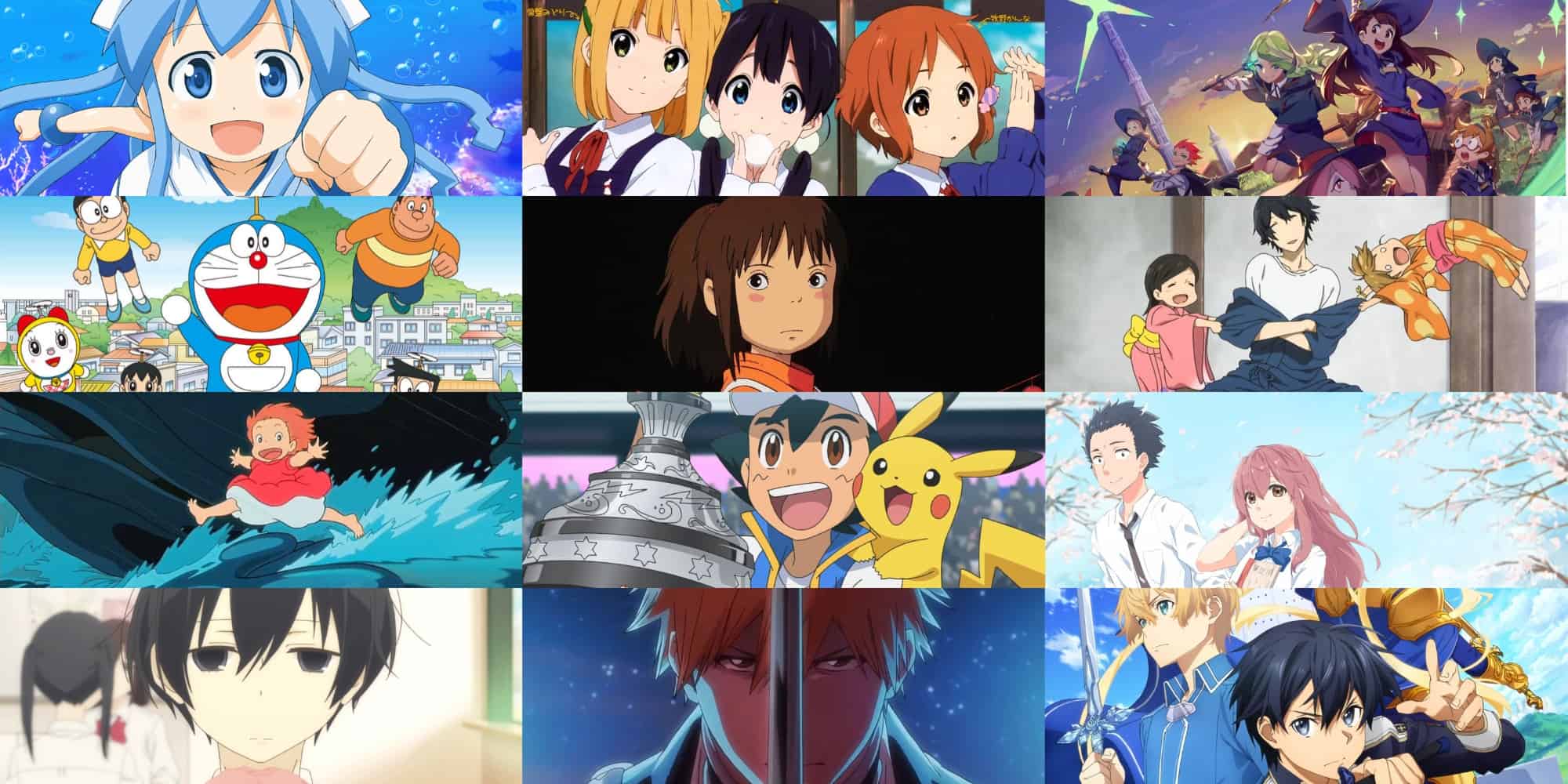Anime, a captivating form of animated entertainment, was first introduced in Japan and has since garnered a global following. Its diverse selection of narratives, personalities, and categories caters to a broad audience spanning various age groups. For any curious 13-year-old seeking to delve into the captivating realm of anime, there is plenty of exhilarating and fitting series to relish.
Anime creates vivid worlds and memorable characters with compelling storytelling. It often offers everything from thrilling adventures to heartwarming tales of friendship and self-discovery. Consider age-appropriateness and content when choosing anime. Before watching, check a show’s content. Many are suitable for teens. Some anime has mature themes, intense action, or violence.
Fortunately, many anime series appeal to 13-year-olds. These shows explore growth, perseverance, teamwork, and self-belief. They can entertain and teach life lessons. Thus, prepare for thrilling adventures, intriguing characters, and captivating stories. Grab some popcorn, settle in, and let anime transport you!
NOTE:
Different people have different levels of maturity; therefore, it is vital to evaluate the suitability of an anime series based on the specific emotional readiness of a 13-year-old and their own personal tastes. Have a good time together while you navigate the enormous universe of anime and get a kick out of uncovering new tales and characters.
42 Anime To Watch For 13-Year-Olds
1. My neighbor Totoro
“My Neighbor Totoro” is a charming tale set in rural Japan after World War II. Satsuki and Mei, two little girls, relocate to the country with their father to be closer to their mother, who is healing in a local hospital.
Satsuki and Mei learn that the adjacent woodland is full of supernatural animals as they settle into their new home. Mei finds a dust bunny while exploring the woodland. This introduces her to Totoro, a loving woodland spirit. Totoro is a big, sleepy creature with a huge smile. Mei and Satsuki befriend Totoro and go on magical adventures with him.
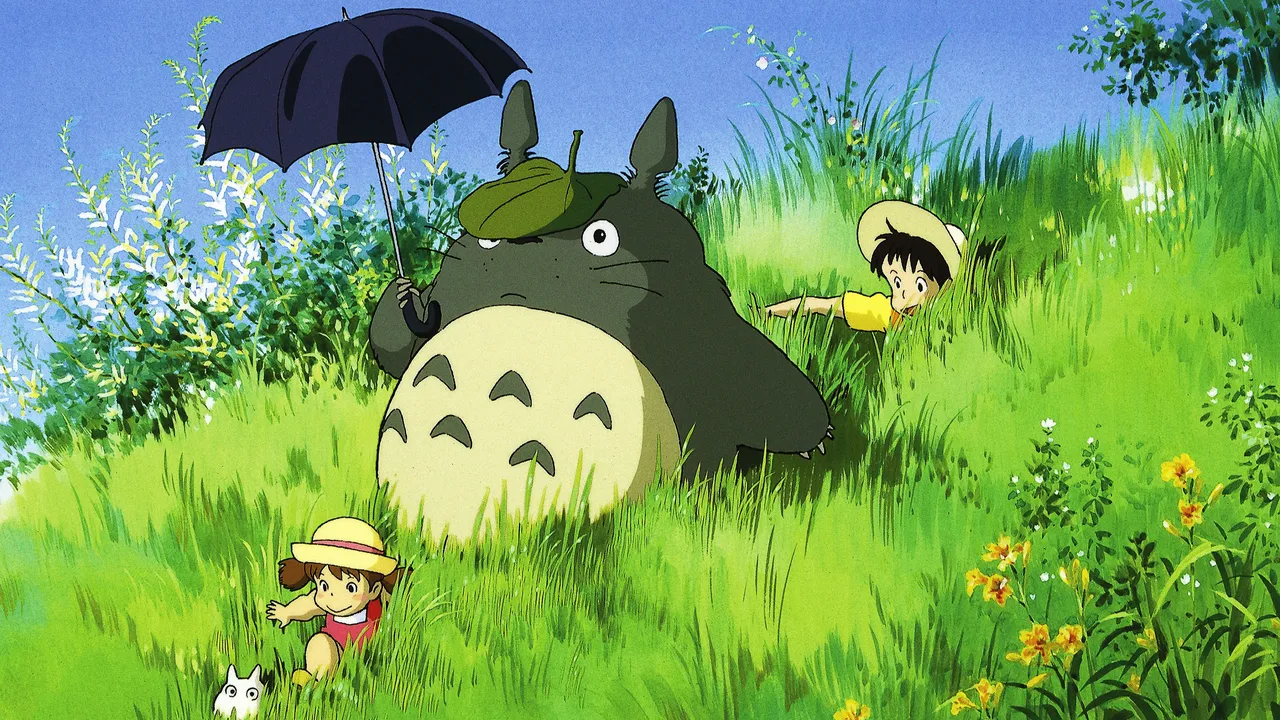
The sisters undergo numerous problems and adventures throughout the film. Totoro and Satsuki rescue Mei when she gets lost or in dangerous circumstances. They meet wonderful creatures like the Catbus and build a close friendship with Totoro as they explore the jungle.
“My Neighbor Totoro” brilliantly portrays the basic pleasures and delights of infancy as the tale continues. It shows the girls’ innocence, inventiveness, and love. Family, resiliency, and ecological conservation are also explored in the film.
2. Naruto
“Naruto” is an epic tale about a young ninja called Naruto Uzumaki and his struggles to become the strongest ninja in his tribe and obtain respect from his peers.
Naruto’s early years as a naughty, lonely orphan who is rejected and persecuted owing to his spirit begin the story. He wants to become the Hokage, the village leader, despite his circumstances.
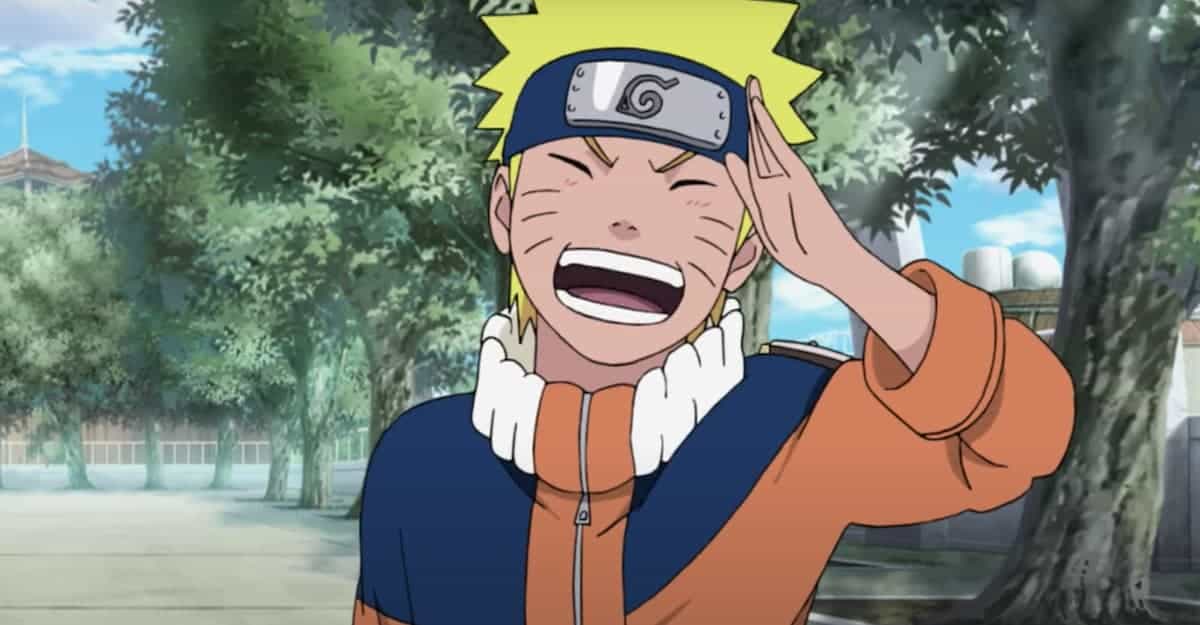
Naruto finds his friendship with Sakura Haruno and Sasuke Uchiha while he trains as a Team 7 member led by Kakashi Hatake. The narrative chronicles their missions, personal struggles, and teamwork.
Naruto fights strong ninjas, renegade groups, and mysterious organizations that threaten peace and stability throughout the series. He learns about friendship, loyalty, and strength as he investigates his history and exposes buried mysteries.
3. Haikyuu!!
“Haikyuu!!” is a captivating sports anime about high school volleyball. Shoyo Hinata, a dedicated and enthusiastic student who wants to play volleyball professionally, is the protagonist.
Hinata joins the Karasuno High School volleyball team after seeing a match as a child. His height and inexperience are the first obstacles. Despite this, Hinata’s exceptional speed, agility, and unwavering determination catch the attention of Tobio Kageyama, a highly skilled but arrogant setter known as the “King of the Court.”
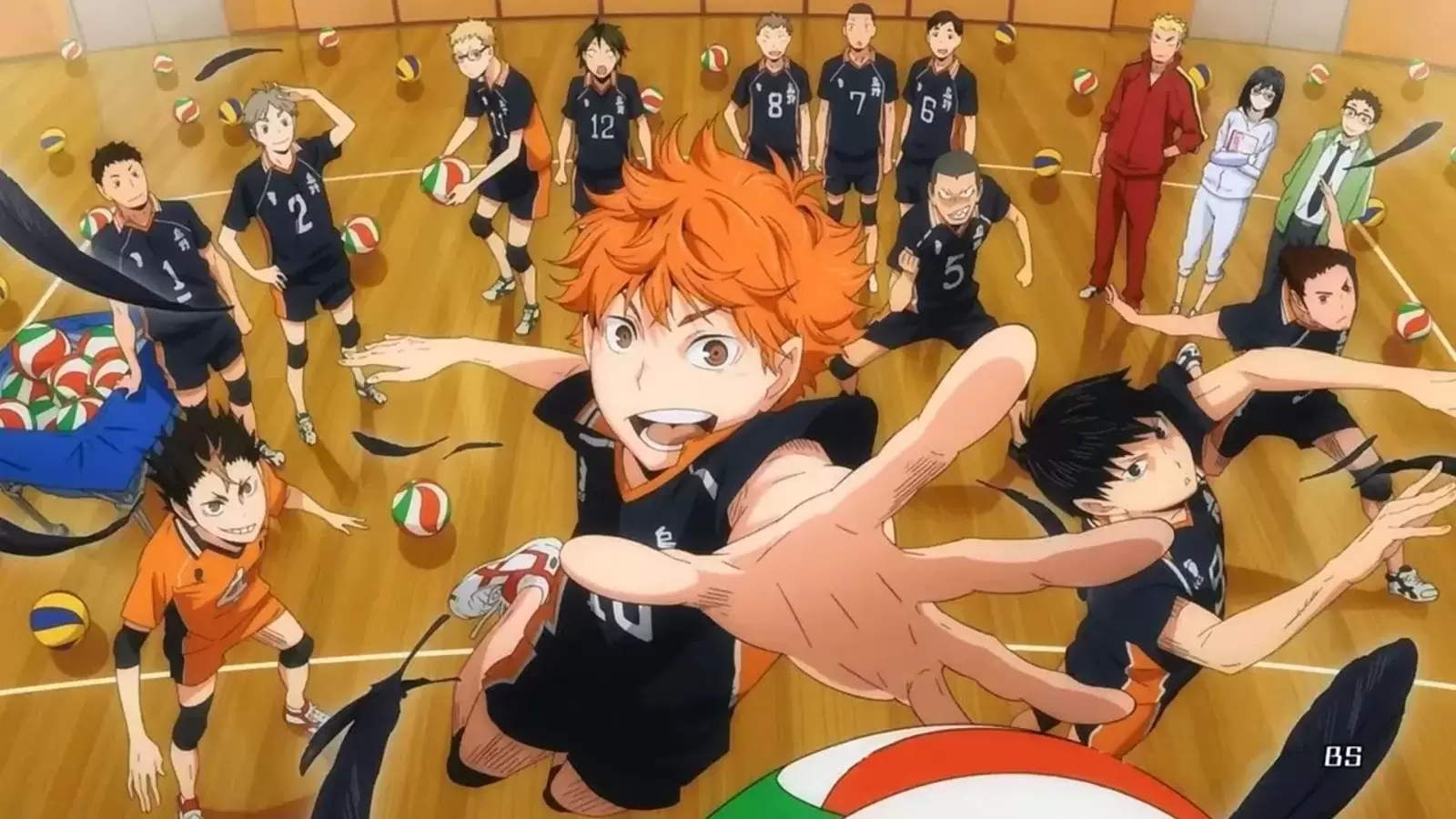
Kageyama sets for Hinata’s assaults, surprising them. They hope to lead Karasuno High to the National Championship.
The squad encounters tough opponents and trains hard to develop their abilities and teamwork as the narrative progresses. They form intimate ties with teammates and opposing schools. Characters’ talents and weaknesses help the team improve.
“Haikyuu!!” features fast-paced volleyball contests with clever moves and excellent talent. The anime explores friendship, competition, collaboration, and excellence via the players’ aspirations, tales, and motives.
“Haikyuu!!” is loved among sports anime fans and others for its spectacular animation, fascinating plot, and likable characters. It celebrates youth, tenacity, and sportsmanship.
4. Cardcaptor Sakura
“Cardcaptors,” commonly known as “Cardcaptor Sakura,” is an anime series about Sakura Kinomoto, a young girl who discovers the Clow Cards. Sakura accidently opens a mysterious book in her basement and releases the Clow Cards, strong magical cards spread over the city. Sakura becomes the Cardcaptor with the help of Keroberos, a guardian beast.
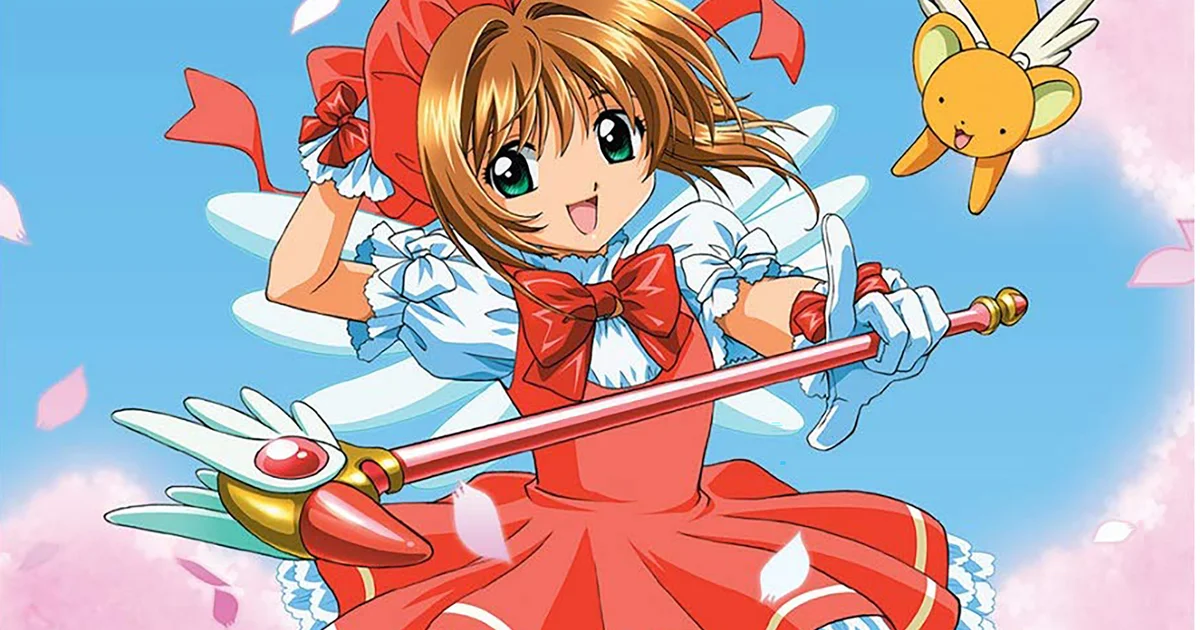
Sakura fights powerful and naughty card ghosts and discovers the magical world’s secrets. She gains support from her best friend Tomoyo, who plans and films her magical girl escapades, and her crush Syaoran Li, a competing Cardcaptor from another clan. They collaborate to grab the remaining cards and safeguard the city.
“Cardcaptors” explores friendship, love, self-discovery, and responsibility in addition to capturing the Clow Cards. The story follows Sakura as she learns to control her magical skills, gains confidence, and overcomes internal and external problems.
5. My Hero Academia
“My Hero Academia” takes place in a world where superpowers, called “Quirks,” are common. Izuku Midoriya, a boy without a Quirk, wants to be a hero.
Heroes are admired and safeguard the populace against Quirk-using baddies. Izuku pursues his dream despite obstacles and criticism, inspired by All Might, the greatest hero. Izuku inherits All Might’s power after a fatal encounter. Izuku attends U.A. High School, a prominent hero institution. Izuku explores himself and his classmates’ Quirks.
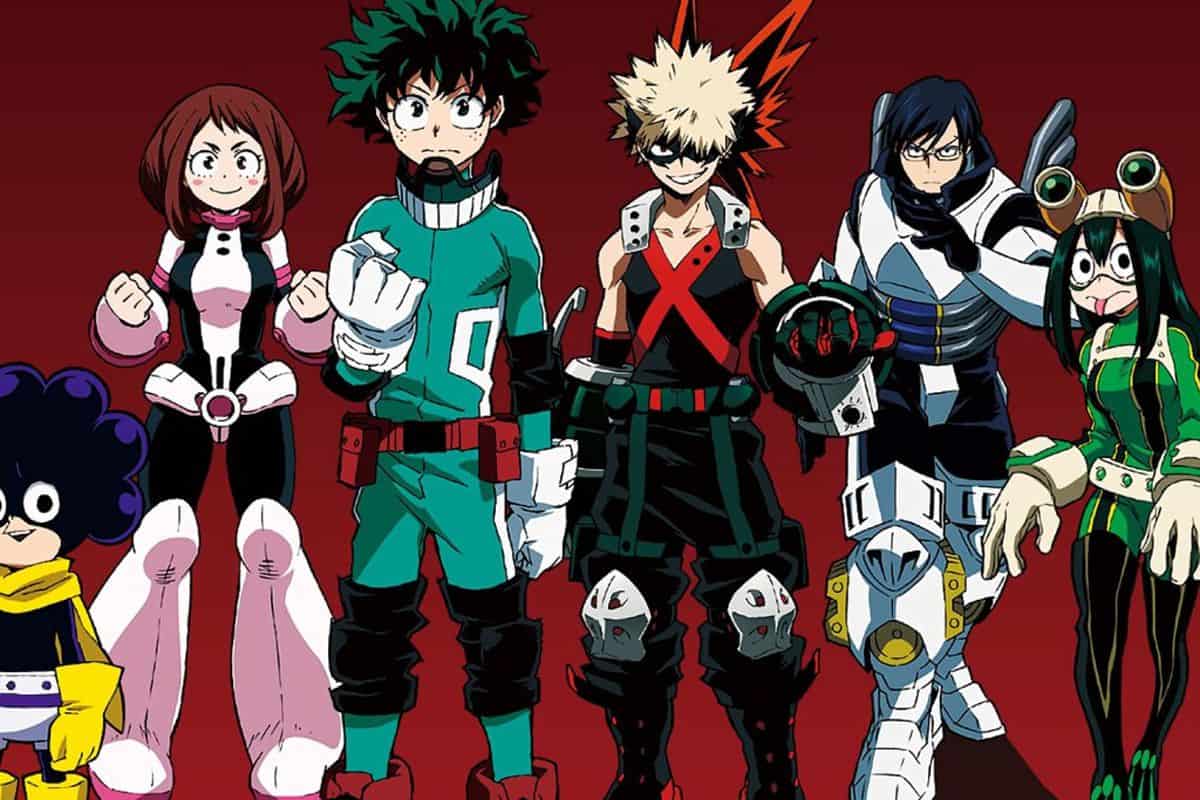
Izuku battles evildoers throughout the series. He masters his new powers, called “One For All,” while negotiating heroism, camaraderie, and duty.
Izuku’s classmates’ aspirations, problems, and motivations are explored as the novel progresses. They encounter difficult adversaries, train hard, and compete in spectacular hero internships and competitions.
“My Hero Academia” emphasizes the pursuit of dreams, collaboration, self-belief, and heroes’ ethical issues. It balances action, emotional storylines, humor, and companionship.
6. Fullmetal Alchemist
“Fullmetal Alchemist” takes place in a universe where alchemy is common. Edward and Alphonse Elric, having lost their mother, utilize alchemy to revive her. Their illicit experiment fails, as Edward loses his left leg and Alphonse his entire body. Edward sacrifices his right arm and bonds Alphonse’s soul to armor to save him.
The brothers search for the Philosopher’s Stone to restore their bodies. State Alchemists join the military, with Edward becoming a “Fullmetal Alchemist.” They discover a great plot involving the Philosopher’s Stone, the military, and their dark world.
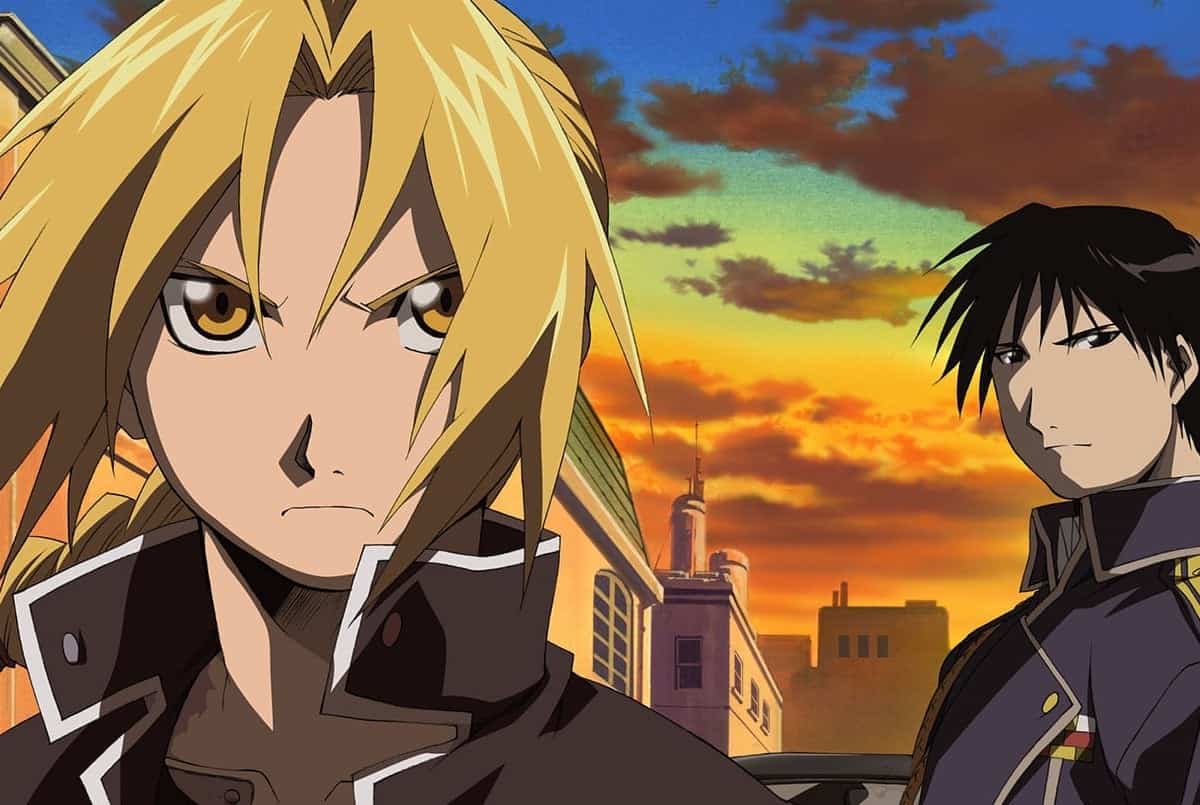
Edward and Alphonse meet many allies and foes with their own motives and secrets. They traverse political intrigue, perilous alchemical experiments, and powerful opponents. The Elric brothers investigate alchemy and the Philosopher’s Stone with their devoted companions, Winry Rockbell and Colonel Roy Mustang.
“Fullmetal Alchemist” addresses deep issues, including the implications of obtaining forbidden knowledge, the human condition, the value of life, and brotherhood. It explores the characters’ moral and ethical difficulties and what they’ll do to succeed.
7. Barakamon
“Barakamon” is a touching slice-of-life anime about calligrapher Seishuu Handa, who is exiled to an island after a tragedy. The story explores Seishuu’s self-discovery, progress, and interactions with the island’s vibrant population.
Seishuu meets quirky villagers that change his life as he adjusts to rural life. He becomes friends with Naru Kotoishi, a curious and lively little girl who exposes him to the island’s dynamic society.
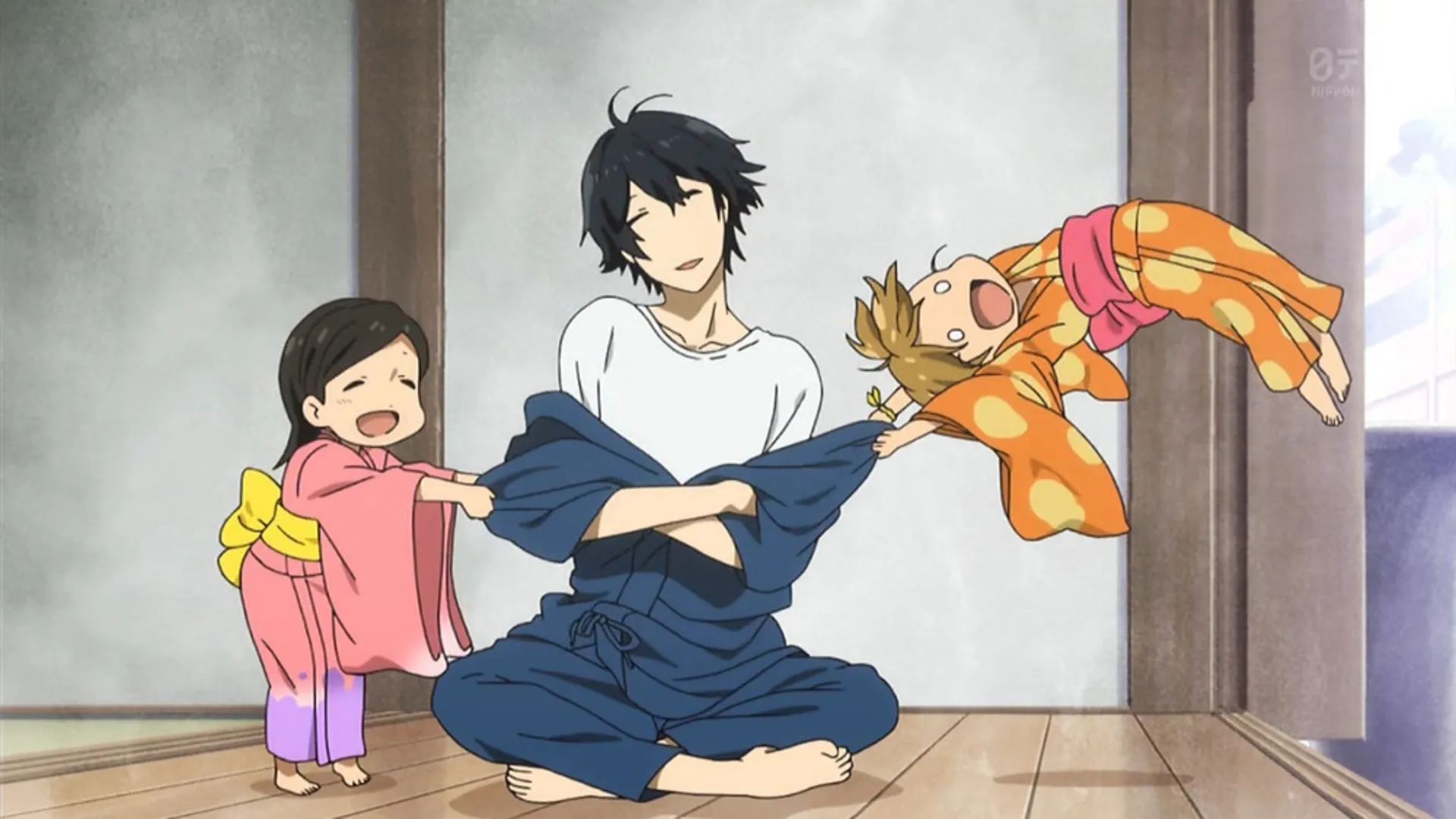
Seishuu rethinks calligraphy after meeting Naru and the other islanders. He learns the value of true friendship and originality.
“Barakamon” examines artistic expression, community, and identity as the story progresses. Seishuu learns from the islanders and discovers his artistic expression.
Humor, sweet moments, and contemplation make the animation interesting. It praises ordinary beauty, companionship, and the transformative potential of new experiences. “Barakamon” is a heartwarming story about life’s little wonders.
8. A Silent Voice
“A Silent Voice,” also known as “Koe no Katachi,” is a moving anime film about atonement, forgiveness, and empathy. The plot follows schoolmates Shoya Ishida and Shoko Nishimiya.
Deaf transfer student Shoko attends Shoya’s elementary school class, where her peers bully Shoko after being captivated by her uniqueness. Shoya’s guilt drives him to mistreat Shoko, and he later feels alienated and remorseful. He seeks redemption by reconnecting with Shoko and apologizing. Shoya learns compassion, understanding, and self-growth while seeking forgiveness.
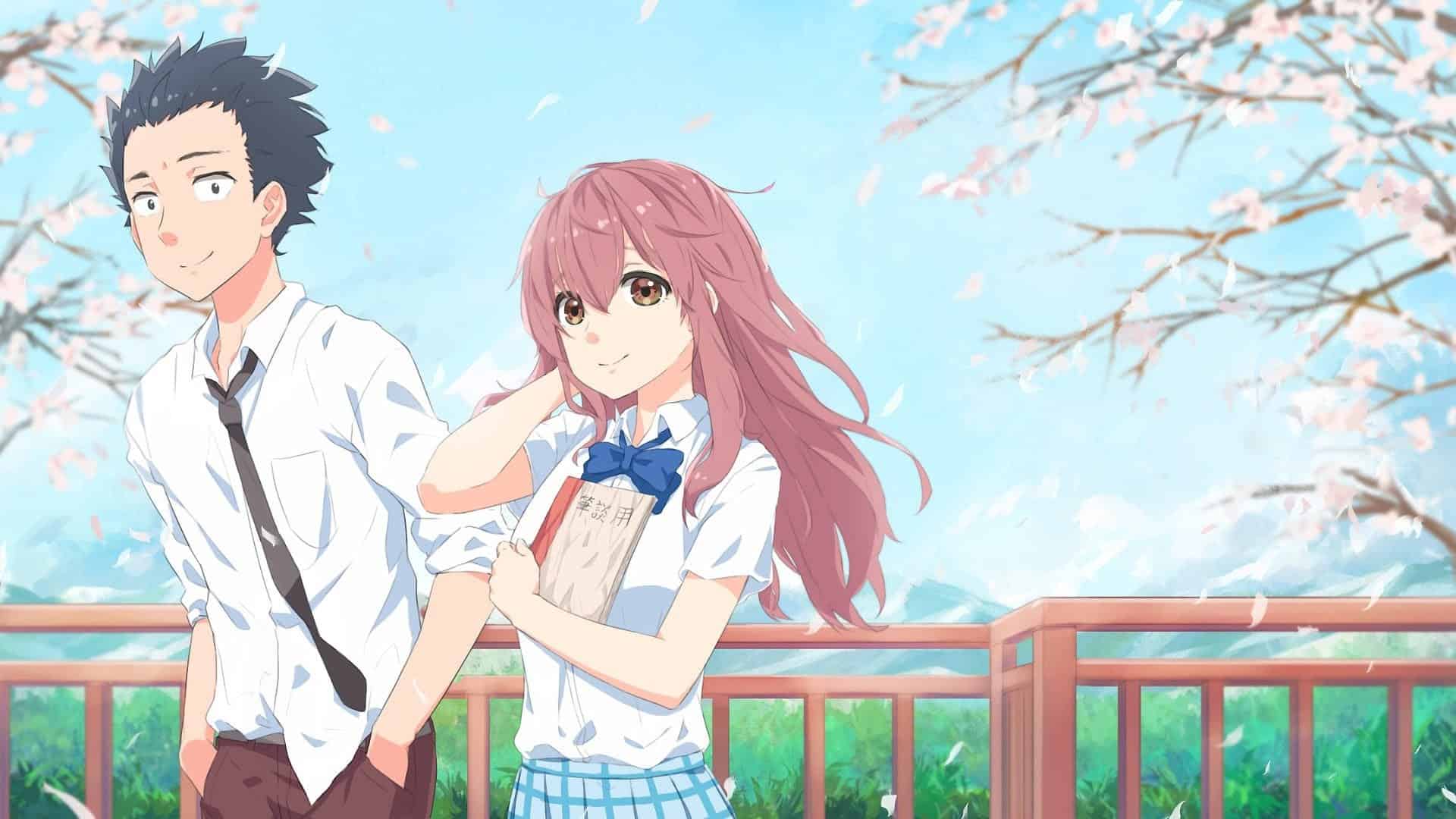
The story tackles human relationships, mental health, and repercussions. Shoya and Shoko struggle with insecurities and prior trauma.
“A Silent Voice” is a powerful story about bullying, handicap, and empathy. It shows how true guilt can affect people and their lives. It invites viewers to consider their actions, beliefs, and impact on others.
9. Fairy Tail
“Fairy Tail” is an Earth Land-based fantasy adventure anime. Lucy Heartfilia, a youthful celestial spirit magician, wants to join Fairy Tail.
Fairy Tail’s fire dragon slayer Natsu Dragneel recruits Lucy after seeing her celestial magic. Lucy and Natsu go on dangerous missions with friends and guildmates.
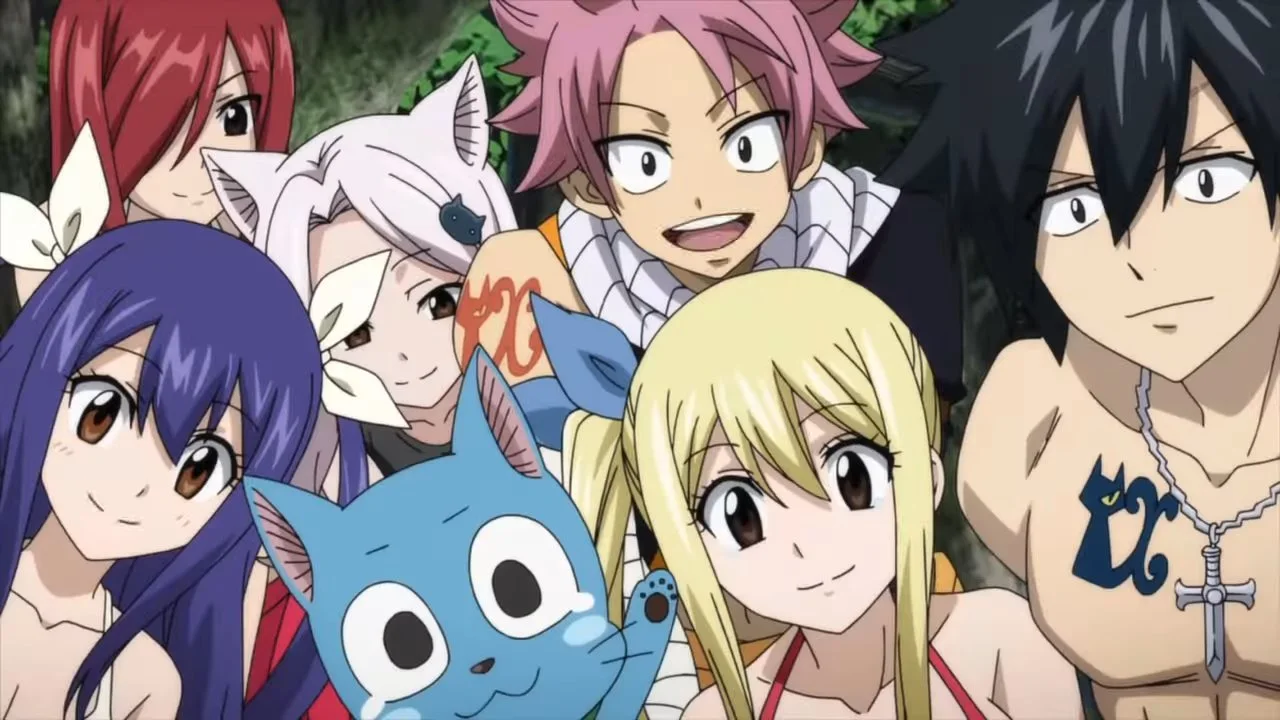
Each tale arc introduces new people, conflicts, and mysteries. Fairy Tail members battle evil guilds, ancient monsters, formidable enemies, and big adventures while developing their connections and honing their magical abilities.
Gray Fullbuster, Erza Scarlet, and Happy the Exceed combat with their magical abilities. They connect and overcome personal challenges by exploring their pasts.
“Fairy Tail” mixes violent combat, meaningful moments, and character development with humor and action. It addresses characters’ complex relationships, personal growth, and guild familial bonds.
10. Spirited Away
A young girl named Chihiro Ogino discovers a wonderful world while moving to a new town with her parents.
After eating spirit food, her parents turn into pigs, trapping Chihiro in this mysterious domain. She realizes that she has entered a spirit bathhouse where people relax and revitalize. Chihiro must explore this odd, colorful realm to save her parents and return home.
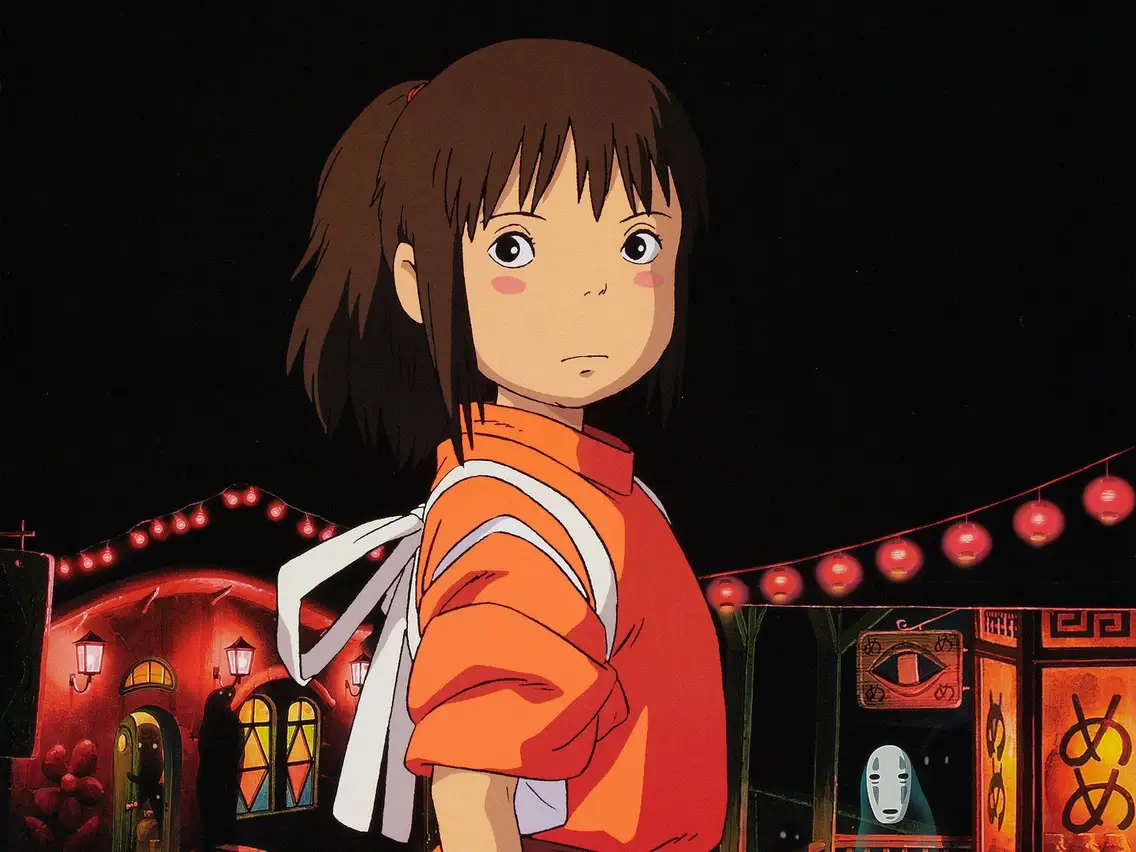
Chihiro works at the bathhouse under Haku, a youthful spirit, meets many odd personalities, and faces many obstacles and challenges. As she meets ghosts with their own goals, she must be resourceful, bold, and kind.
Chihiro grows in strength and self-awareness. She learns resilience, empathy, and self-identity. Chihiro’s goodness and tenacity help her free herself and her parents when she connects with ghosts like Yubaba.
“Spirited Away” is a mystical tale about identity and has won international recognition for its fascinating characters, inventive world, and emotive storytelling. Its captivating and transforming movie experience is for all ages.
11. Pom Poko
Isao Takahata’s “Pom Poko” is an innovative animation feature. Tanuki, shape-shifting raccoon dogs, are threatened by urban development in their forest home.
Tanuki uses their metamorphosis powers to fight back as human development destroys their habitat. They use trickery and illusions to terrify humans and defend their area. The film’s Tanuki’s metamorphosis, from human disguises to testicular stunts, is amusing and significant.
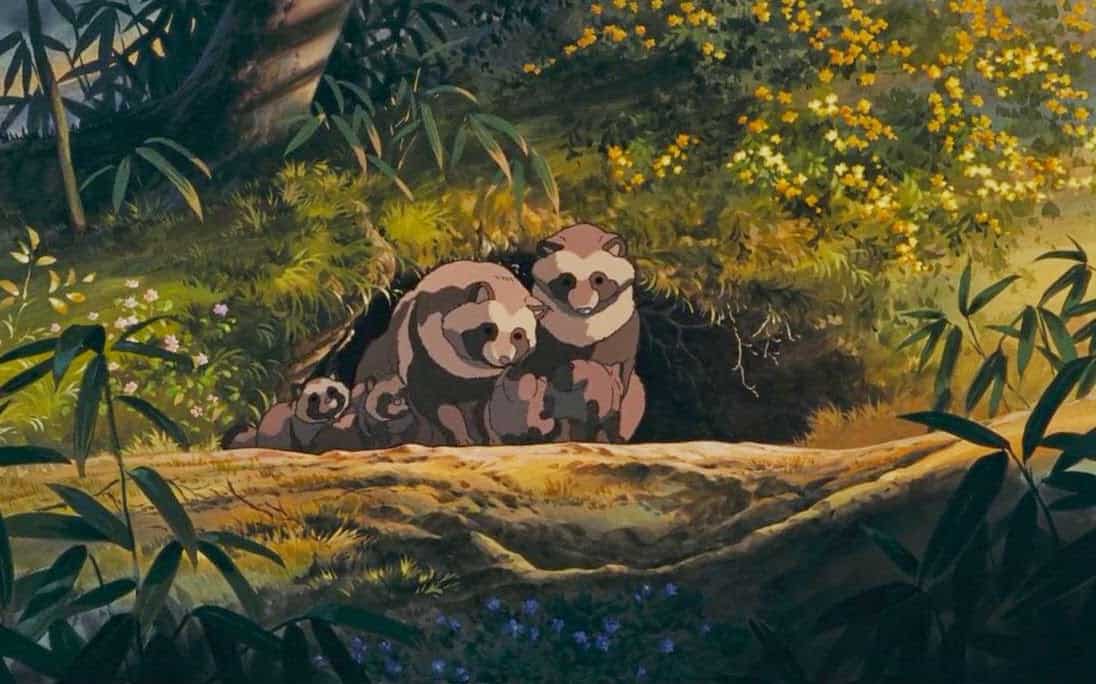
Tanuki fights internal disputes and competing beliefs to preserve their way of life. Some Tanuki prefers peaceful coexistence with people, while others prefer direct conflict. The plot centers on their differences and attempts to connect.
“Pom Poko” explores environmentalism, urbanization, and tradition-modernization conflicts. It shows Tanuki’s effort to adapt to a rapidly changing world and retain its culture. The film also examines how deforestation and urbanization affect wildlife.
12. Kiki’s Delivery Service
Kiki, a young witch, undergoes a witch’s initiation. Kiki leaves home on her broomstick to locate a town where she may live alone for a year. Kiki arrives in Koriko, a coastal city, with her talking black cat, Jiji, and launches her own flying delivery service.
Kiki learns and grows as she adjusts to her new existence. Self-doubt and losing her magical skills affect her capacity to fly. Kiki learns endurance, friendship, and choosing her own path from new companions like the kind-hearted baker Osono and the artist Ursula.
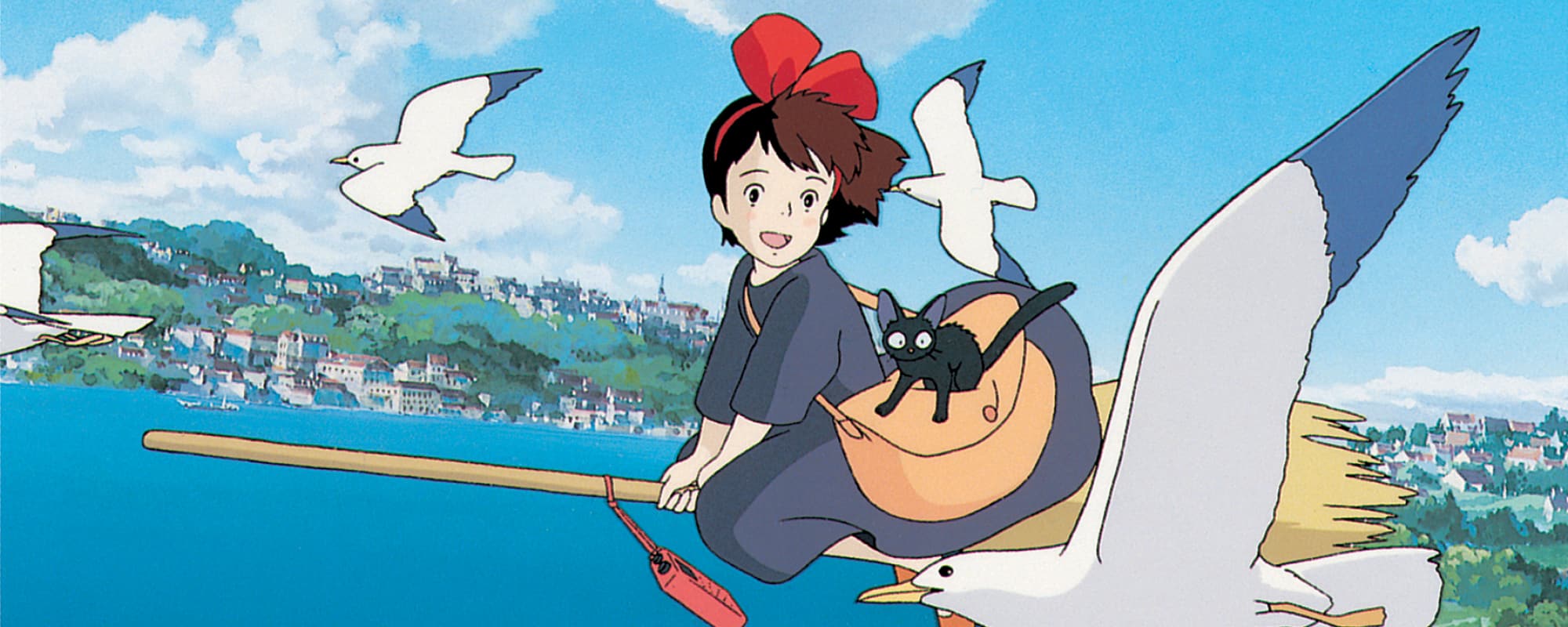
Kiki develops her talents and grows confidence while running her delivery service and mingling with the villagers. She uses her resourcefulness and determination to improve the community and meet clients’ needs.
“Kiki’s Delivery Service” is a touching coming-of-age story about independence, self-discovery, and purpose. It praises tiny miracles and everyday joy. Miyazaki’s trademark detail, animation, and characters are on display. “Kiki’s Delivery Service” is a classic due to its cheerful message and charming ambiance.
13. Death Note
“Death Note” is a psychological thriller anime series about Light Yagami, a gifted high school student who finds Death Note. The Death Note can kill anyone written in its pages if the writer knows their face.
Light believes he can create a utopia by eliminating criminals, fascinated by the Death Note. He becomes “Kira” and executes offenders, drawing public and police attention.
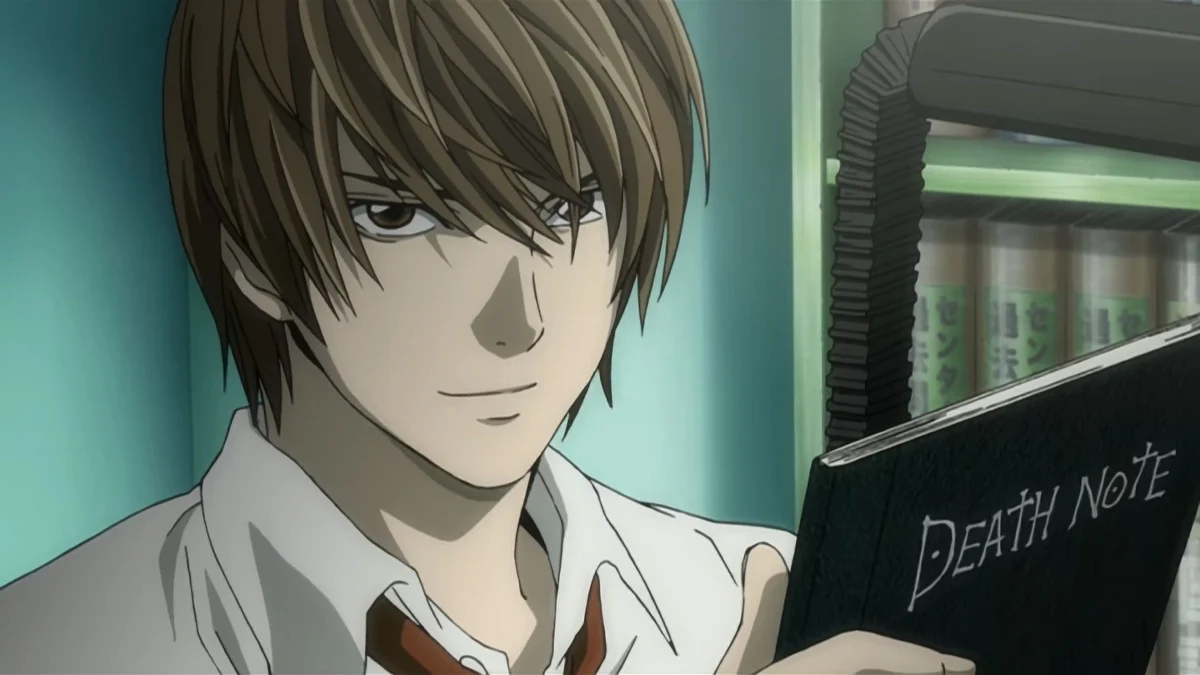
L, a talented investigator whose identity is hidden, investigates and apprehends Kira as Light’s deeds become famous. Light and L play a high-stakes game of cat and mouse, using their intelligence and strategy to outwit one other.
Light struggles with morality and grows obsessed with his god-like abilities. As the body count increases, moral boundaries blur and Light’s deeds attract L and others with their own agendas.
“Death Note” explores justice, morality, and power. It examines the effects of godhood and human evil. Light’s complicated connection with his allies and foes, notably Ryuk, the shinigami (death god) who dropped the Death Note into the human world, is also explored.
14. Hunter x Hunter
Gon Freecss, a young boy, becomes a Hunter to find his father, a famous Hunter. Gon befriends other Hunters like Killua Zoldyck, Kurapika, and Leorio Paradinight.
“Hunter x Hunter” has numerous story cycles with various difficulties and goals. Characters encounter hazardous monsters, other Hunters, and other challenges in arduous exams. Hunters and Nen, powerful artifacts, become more mysterious as the story progresses.
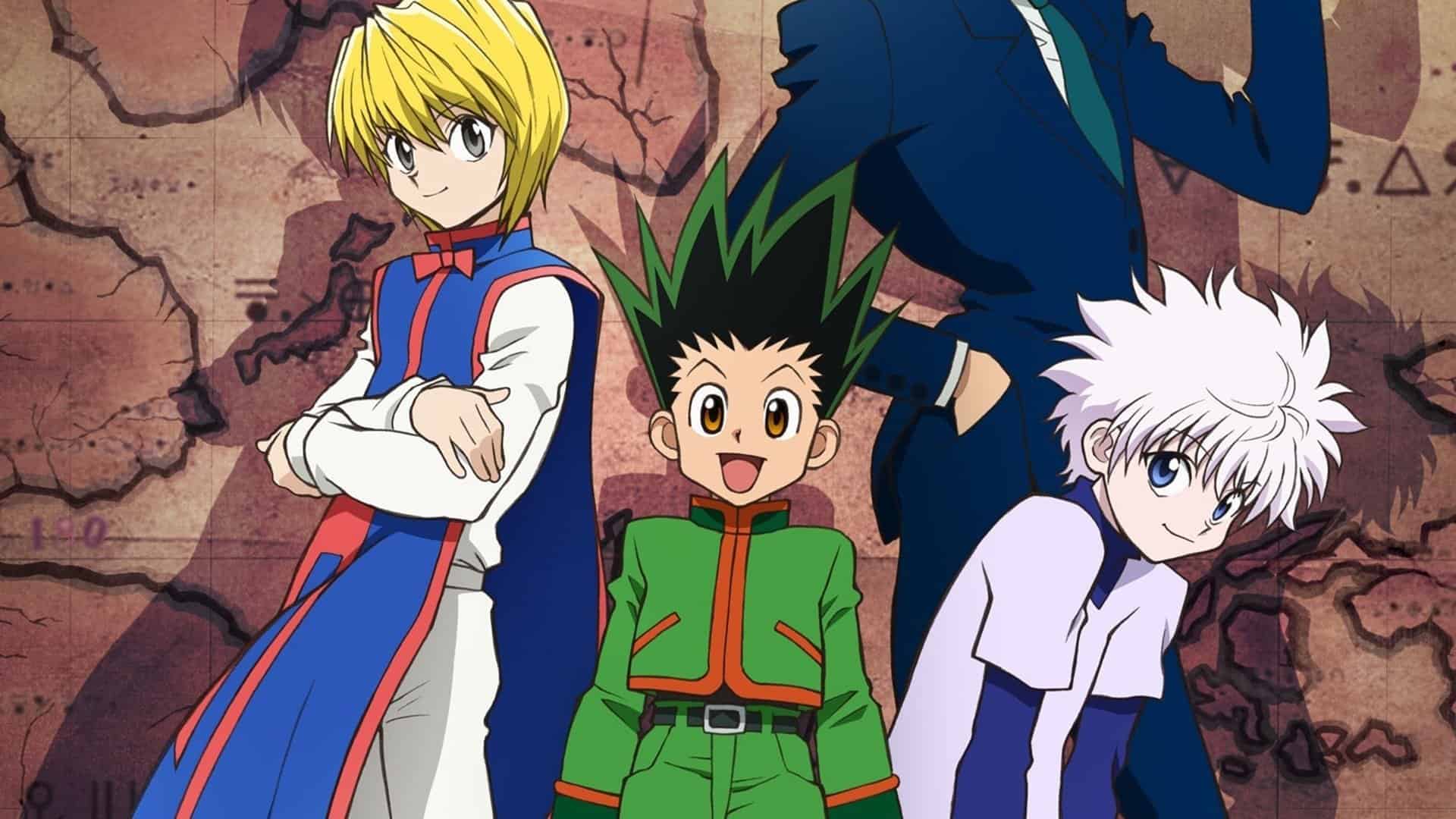
The series examines power and its effects on society. The protagonists face their worries and overcome their limitations via intense training and Nen. They encounter moral challenges, ideological conflicts, and the implications of their choices.
Gon and his pals discover dark secrets, face powerful foes, and undertake challenging tasks in the Hunters’ world. The show tackles friendship, devotion, personal growth, and dreaming.
15. One-Punch Man
The satirical superhero anime “One-Punch Man” features Saitama, an average person with superpowers. Saitama struggles with routine and lack of challenge despite being able to defeat any opponent with a single punch.
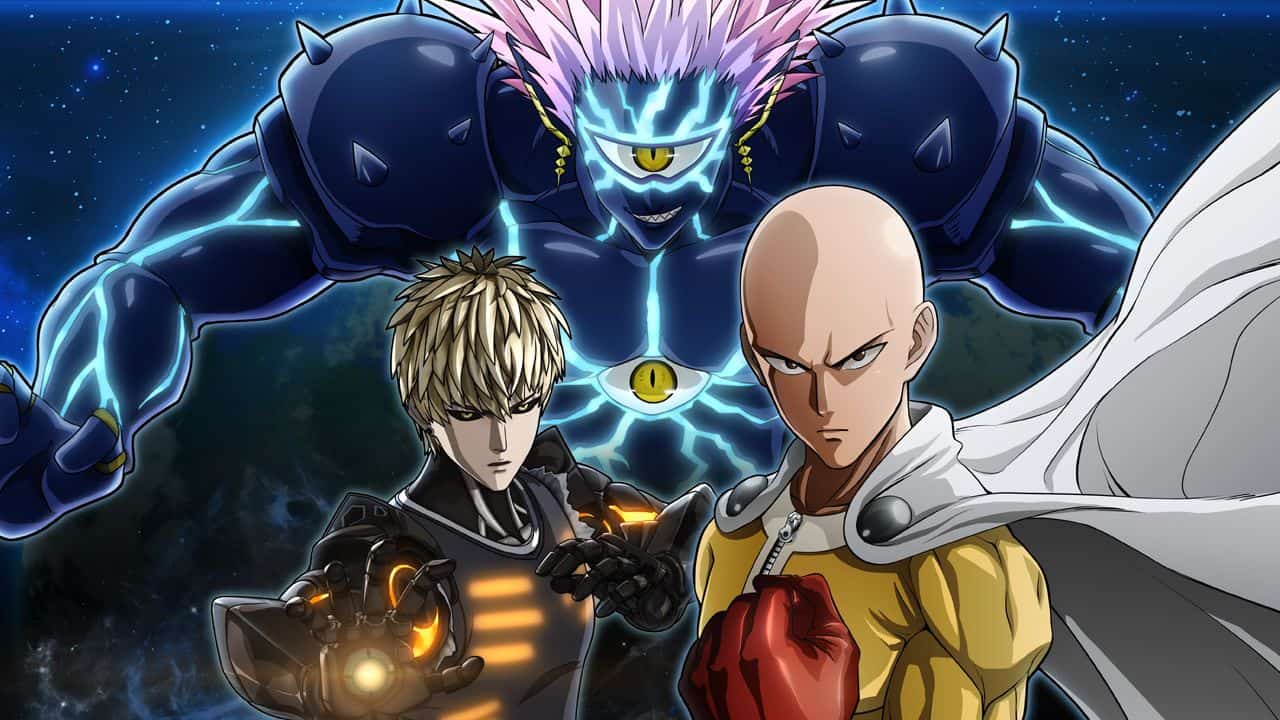
Superheroes protect the innocent from monsters and evil in the series. Saitama joins the Hero Association in search of worthy opponents and excitement. He meets a variety of heroes with unique abilities and eccentricities. He befriends the cyborg Genos, who becomes his student, and the enigmatic and flamboyant King.
The series mixes action, comedy, and social commentary as Saitama fights monsters and villains. It satirizes superheroes and investigates power, identity, and purpose. Despite his enormous might, Saitama remains faithful to his principles of justice and courage.
Saitama’s lackluster appearance and astonishing talents make “One-Punch Man” funny. The show mixes over-the-top action with self-awareness and visual gags.
16. Bleach
Ichigo, a Soul Reaper, protects humanity from Hollows and guides the dead to the afterlife. Ichigo fights formidable Hollows, rogue Soul Reapers, and other supernatural threats with his fellow Soul Reapers and the Visored.
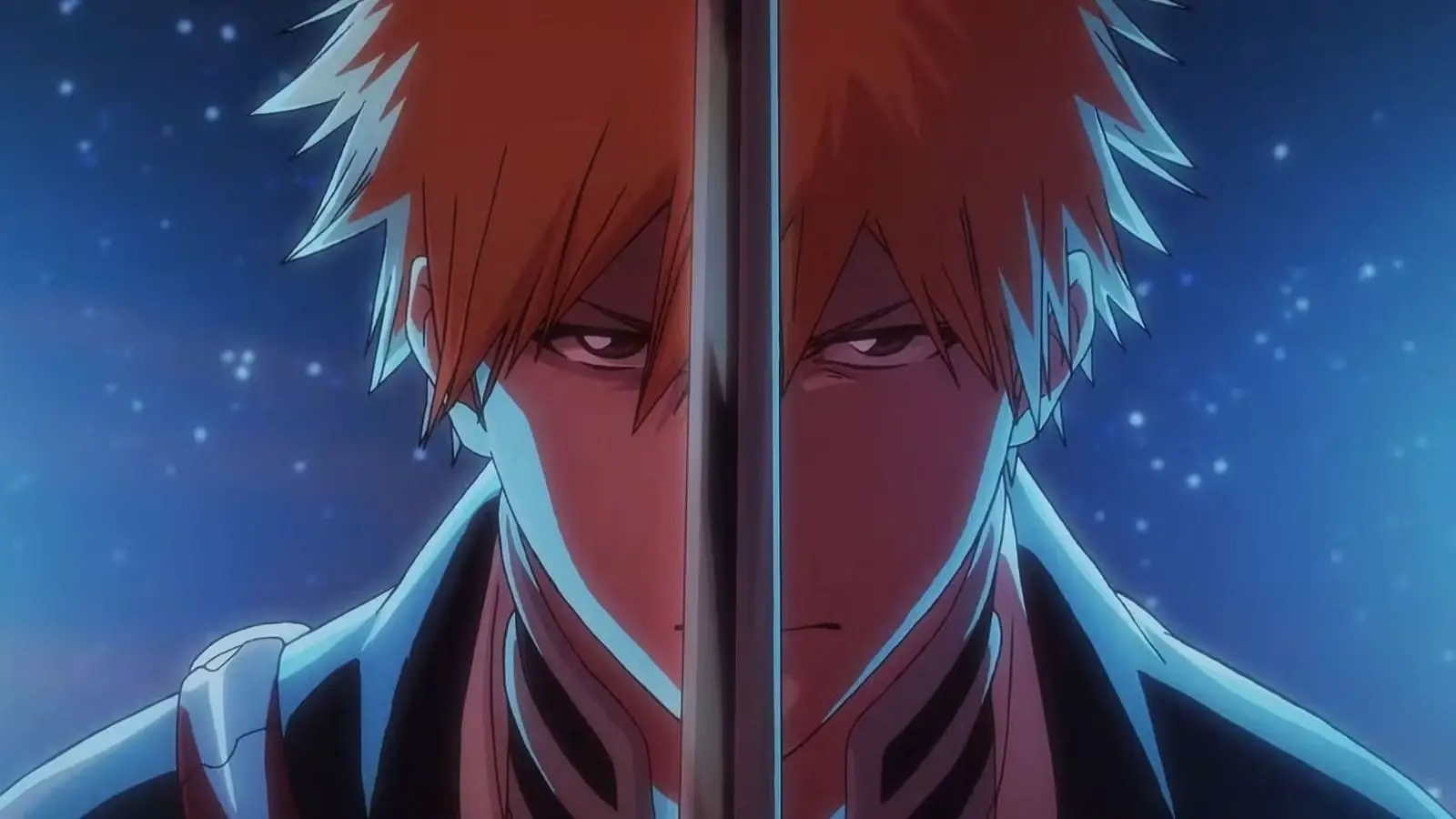
Ichigo and his allies battle dangerous opponents, personal issues, and sinister Soul Society machinations throughout the series. Story arcs introduce new adversaries, allies, and riddles.
As the story develops, Bleach’s kingdoms, prophecies, and Soul Society history are revealed. Ichigo’s powers change, and he finds his heritage and connection to spirits.
“Bleach” features strong action, supernatural elements, character-driven storytelling, and themes of friendship, loyalty, and sacrifice. The series explores the afterlife, morality, and convictions.
17. Doraemon
The popular anime series “Doraemon” is based on Fujiko F. Fujio’s manga. Doraemon, a robotic cat from the 22nd century, helps a lazy, underachieving child named Nobita Nobi.
Doraemon is sent by Nobita’s descendants to better his life and change his family’s future. Doraemon helps Nobita solve issues, teach life lessons, and give comic relief with his “4th-dimensional pocket” inventions.

“Doraemon” episodes depict Nobita and his companions, including Shizuka, Gian, and Suneo, in diverse adventures and difficulties. Doraemon’s devices enable them to face common obstacles and encounter fantastical monsters.
Friendship, perseverance, and learning from mistakes are themes throughout the series. Nobita learns about hard labor, kindness, and responsibility from Doraemon and his companions. Morality and technology’s effects are also discussed in the show.
“Doraemon”‘s ability to entertain and teach through imaginative narrative, emphasizing personal growth, empathy, and imagination, is its lasting appeal.
18. Mysterious Joker
The plot follows Joker, a juvenile phantom thief who can steal expensive things. Joker and Hachi, a talking mechanical parrot, traverse the world to steal rare and valuable goods. His motivations go beyond self-interest. Joker’s ultimate goal is to obtain the “Clown Jewels,” a group of magical gems that provide enormous power.
Joker battles criminals, detectives, and secret groups throughout the series. Joker must solve a new heist or mystery each episode utilizing his wits, agility, and huge knowledge of tricks and illusions.
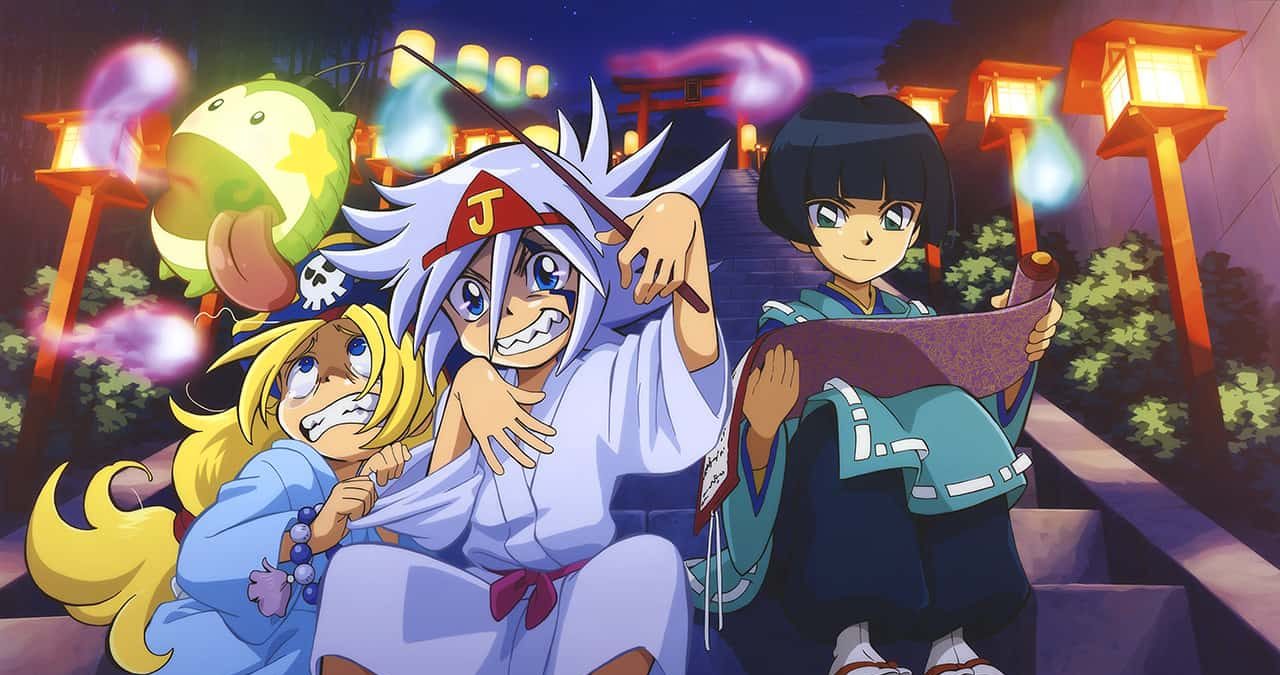
The story reveals Joker’s history and the Clown Jewels’ origins. The story highlights Joker’s complicated relationship with his rival thieves, such as Spade, and other individuals who become caught up in his schemes.
“Mysterious Joker” mixes comedy, mystery, and adventure. It lightheartedly shows Joker’s ingenious and daring thieving. Joker relies on friends and allies to overcome problems, emphasizing intelligence, creativity, and collaboration.
19. Pokemon
Pokemon Trainers collect and train Pokemon to fight in the “Pokemon” anime. Ash Ketchum, a youthful wannabe Pokemon Master, is the main character.
Ash gets his first Pokemon, Pikachu, from Professor Oak. Ash competes in Pokemon Gym battles and collects Gym Badges in different locations to become a Pokemon Champion. He befriends Misty, Brock, and many other Trainers on his quest.
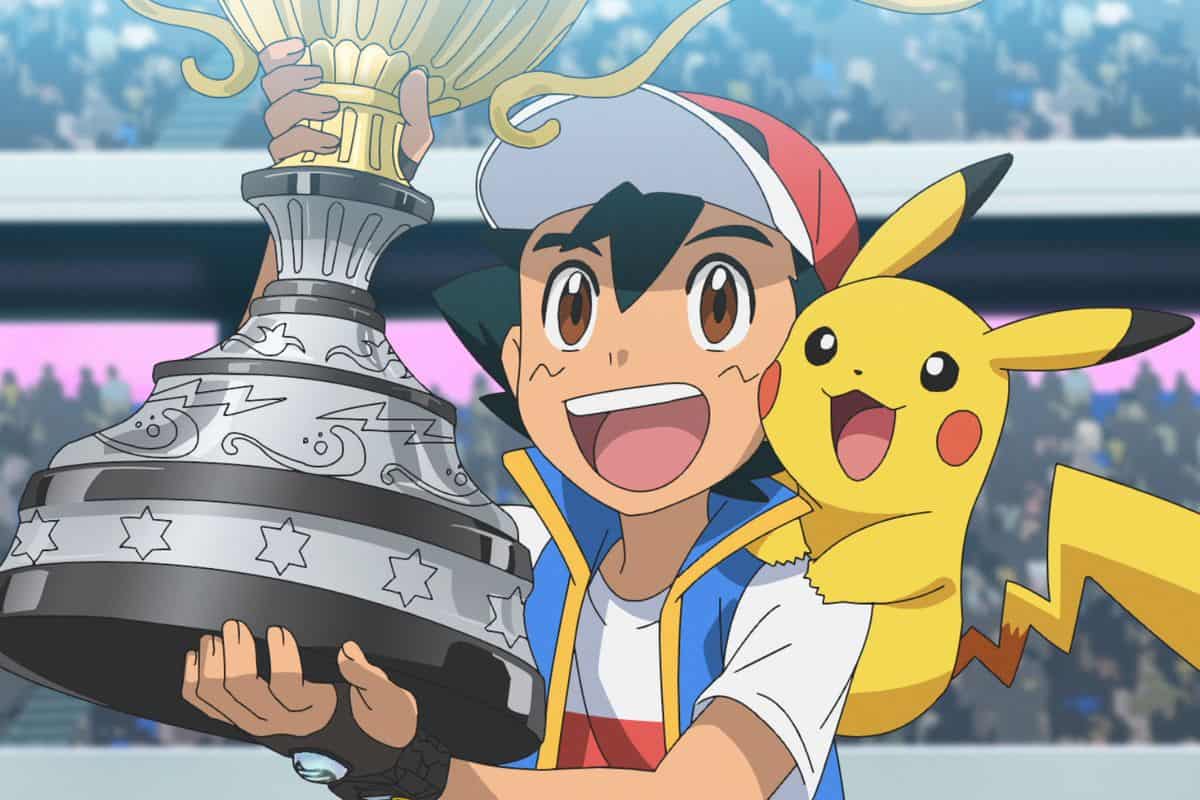
Ash meets new Pokemon, confronts powerful Gym Leaders, enters Pokemon Contests, and competes in regional Pokemon Leagues as he travels through Kanto, Johto, Hoenn, Sinnoh, Unova, Kalos, Alola, and Galar. Team Rocket—Jessie, James, and their talking Meowth—constantly plot to take Ash’s Pikachu.
Ash bonds with his Pokemon team, which includes Pikachu and others, throughout the story. He learns about friendship, perseverance, and Pokemon respect.
“Pokemon” has become a global phenomenon, enthralling viewers of all ages with its bright animation, fascinating characters, and a wide variety of Pokemon species. It spawned movies, spin-offs, video games, trading cards, and merchandise.
20. Tanaka-Kun Is Always Listless
Tanaka, a lazy high school student, daydreams or naps in class because he wants a quiet existence. He regularly slouches, sleeps, or finds methods to avoid exercise.
Oota, Tanaka’s lively best buddy, occasionally disrupts his peaceful life. Oota encourages Tanaka to live more actively. They meet pupils with unique personalities and eccentricities.
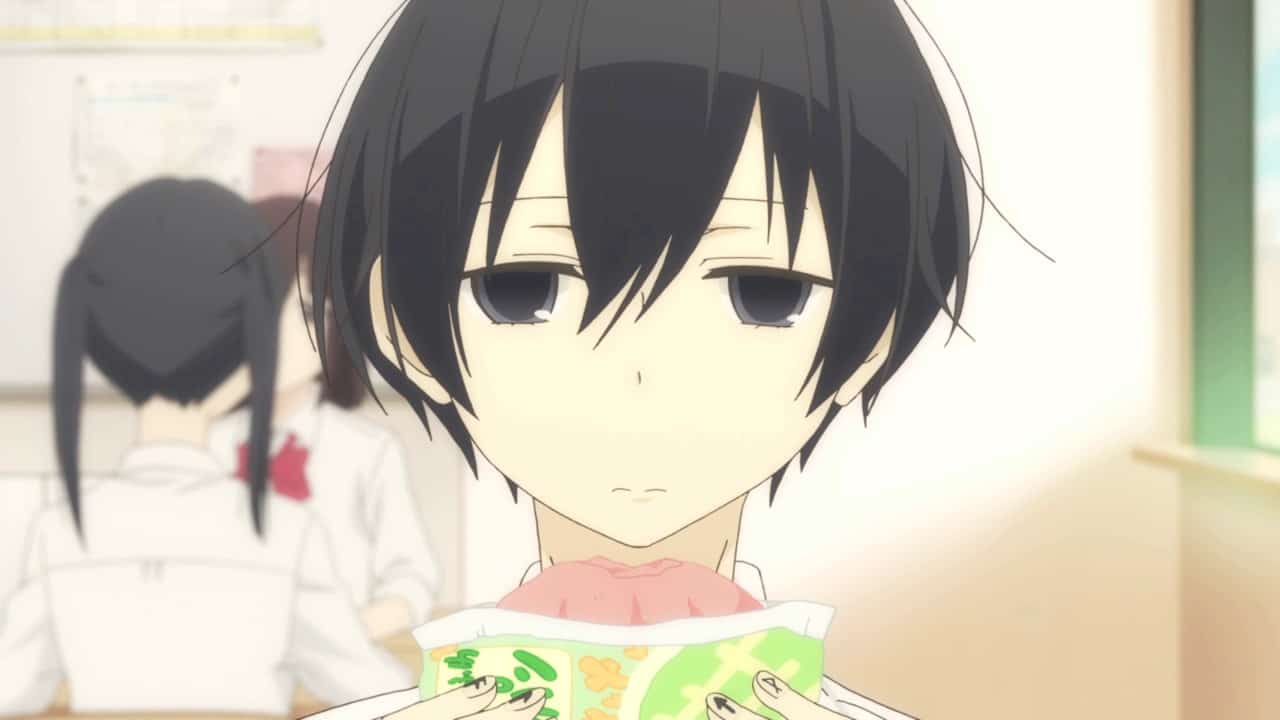
The story follows Tanaka’s unusual attitude to school, social, and unexpected events. Tanaka’s sloth often leads to humorous situations, whether he is sleeping in class, avoiding duties, or making elaborate plans to relax.
“Tanaka-kun is Always Listless” explores friendship, acceptance, and self-acceptance through its laid-back protagonist’s comedy and charm. The show highlights ordinary joys and is a relaxing slice-of-life and comedy anime with likable characters and mild humor.
21. Log Horizon
Elder Tale, an MMORPG, is the setting. The Elder Tale expansion pack “Novasphere Pioneers” launches the series. During the update, thousands of players become their avatars. They live inside the game, unable to log out.
Shiroe, a socially awkward strategist, is the series’ protagonist. He establishes “Log Horizon” alongside Naotsugu and Akatsuki. Shiroe investigates their new reality to help the captive gamers return home.

Shiroe and his guild face several problems in Elder Tale, like adapting to their new lifestyles, building alliances, and fighting fearsome monsters and raid bosses. Players join groups and fight for resources and regions, causing social and political problems.
“Log Horizon” explores virtual reality’s psychological and societal effects as well as the game’s action and adventure. Identity, community, government, and reality fantasy are explored.
Shiroe and his pals explore Elder Tale’s complicated rules and procedures in this fantasy, strategy, and character development series. “Log Horizon” is noted for its elaborate world-building, plot twists, and examination of the interactions between players stuck in a virtual environment.
22. Kenichi: The Mightiest Disciple
Kenichi Shirahama, a shy high school student, wants to become a martial artist and joins the dojo to avoid bullies and be inspired by Miu’s prowess.
Kenichi trains with eccentric and powerful Ryozanpaku teachers, including Hayato Furinji, Apachai Hopachai, Shigure Kosaka, Kensei Ma, and Akisame Koetsuji. He strengthens, speeds, and learns martial arts.
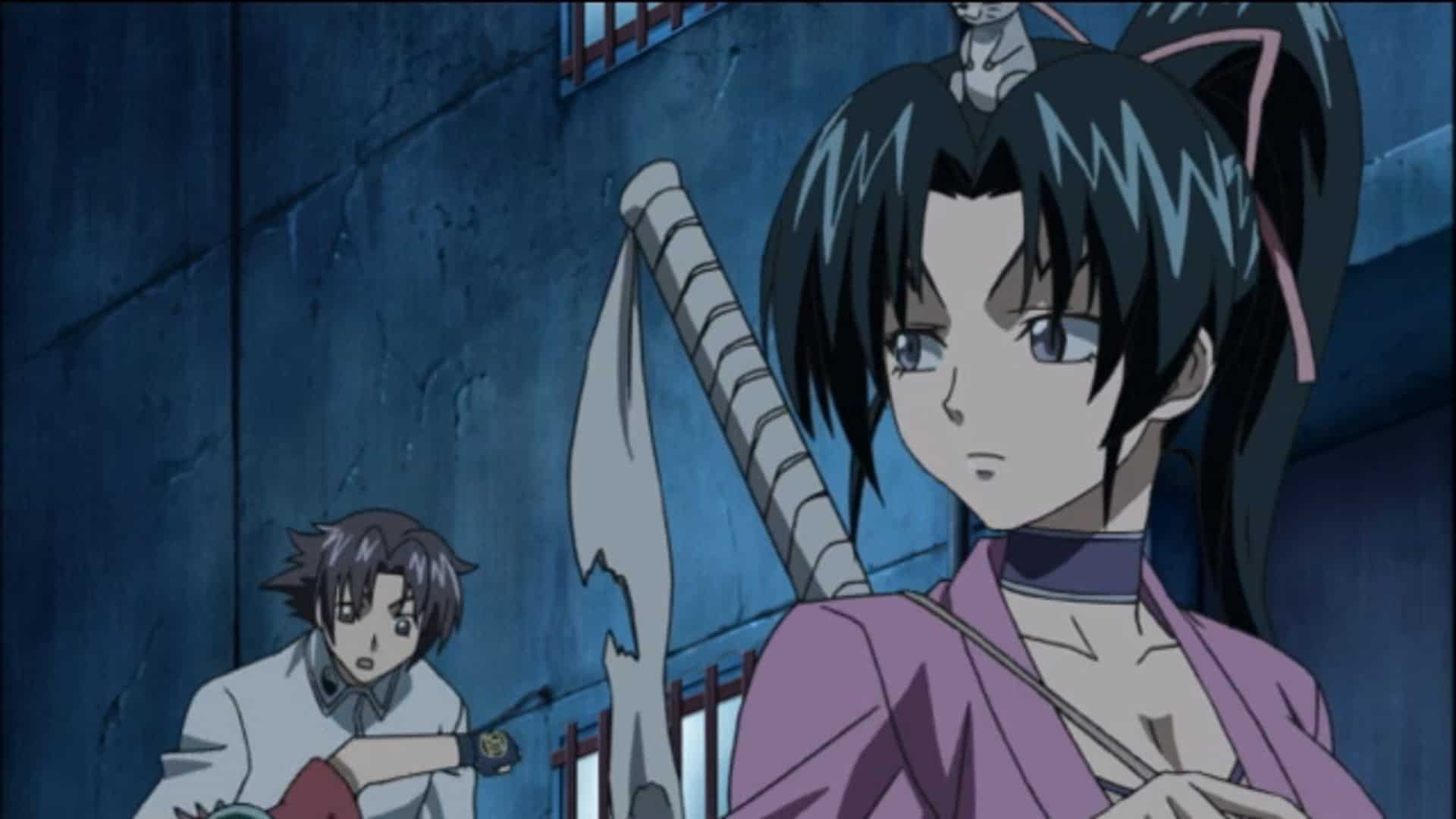
He then enters a world of warring martial arts factions, perilous contests, and powerful opponents as he trains. He fights various martial artists, both allies and adversaries, to become the strongest disciple and protect his loved ones.
Kenichi develops confidence and learns life lessons throughout the series. As Kenichi balances martial arts, friendships, and Miu, the plot mixes action, comedy, and romance.
“Kenichi: The Mightiest Disciple” tackles martial arts, tenacity, and drive. It emphasizes self-improvement, discipline, and a variety of martial arts styles. Martial arts anime enthusiasts will like the series’ intense fights, comedy, and character development.
23. Squid Girl
Based on Masahiro Anbe’s manga, “Squid Girl,” or “Shinryaku! Ika Musume,” is a lighthearted comedy animation. Squid Girl, a young girl from the ocean, wants to conquer humans for polluting the seas.
Squid Girl is a humanoid squid with ink-squirting tentacles. She accidentally smashes the wall of Lemon Beach House, a beachside restaurant, thwarting her goals for world dominance. Squid Girl must work at the restaurant to repay her loan.

Squid Girl meets a colorful group of people, including Lemon Beach House owner Eiko Aizawa and her sisters Chizuru and Takeru, as a waitress.
“Squid Girl” episodes are self-contained comedies about Squid Girl’s attempts to adjust to land life and everyday circumstances. Her exaggerated squid-like behavior and misconceptions cause chaos and laughter. Squid Girl’s unique perspective makes her funny, whether she’s trying to clean the beach, play sports, or make friends.
Squid Girl makes friends and learns about empathy, teamwork, and taking responsibility as the series advances. She grows to love humanity and her new allies despite her initial desire to dominate.
24. Nisekoi
Raku Ichijo, a high school student and yakuza heir, and Chitoge Kirisaki, the daughter of a rival gang leader, are the main characters. To reconcile the two groups, their families have arranged for them to act as a couple.
Raku and Chitoge clash because of their different personalities. They must convince classmates and friends while navigating their own conflicting feelings. As they spend more time together, they establish a deeper bond and begin to question their genuine sentiments.

Raku also promised to marry a former girlfriend when they reunited, complicating matters. He has a keyed locket, and she has the matching lock. Raku has amorous and comic encounters with numerous girls, notably lovely Kosaki Onodera and hyperactive Seishiro Tsugumi.
Raku and Chitoge become caught up in misunderstandings, love triangles, and comic misadventures. They try to keep up their charade while discovering Raku’s childhood pledge and the identity of the girl he promised to.
“Nisekoi” addresses love, friendship, and relationship complexity. Raku and Chitoge’s fictitious relationship is filled with drama, romance, and humor as they try to solve their pasts.
The delightful cast’s peculiarities and personalities add to the comedy and romance. “Nisekoi” is a fun romantic comedy with lighthearted moments, heartbreaking confessions, and the anticipation of Raku’s locket’s reality.
25. Selector Infected: Wixoss
“Selector Infected: WIXOSS” is a psychological drama anime with card fights. A bunch of girls plays WIXOSS, a fascinating card game that grants wishes. Ruko Kominato, the protagonist, is a little girl who finds a WIXOSS card deck and becomes a Selector.
LRIGs, sentient cards with personalities, choose Selectors to fight other Selectors. A Selector must win enough bouts to obtain “Eternal Girl” cards. Only a few Selectors can have their wishes granted, while the rest are doomed to lose their memories and grow depressed.
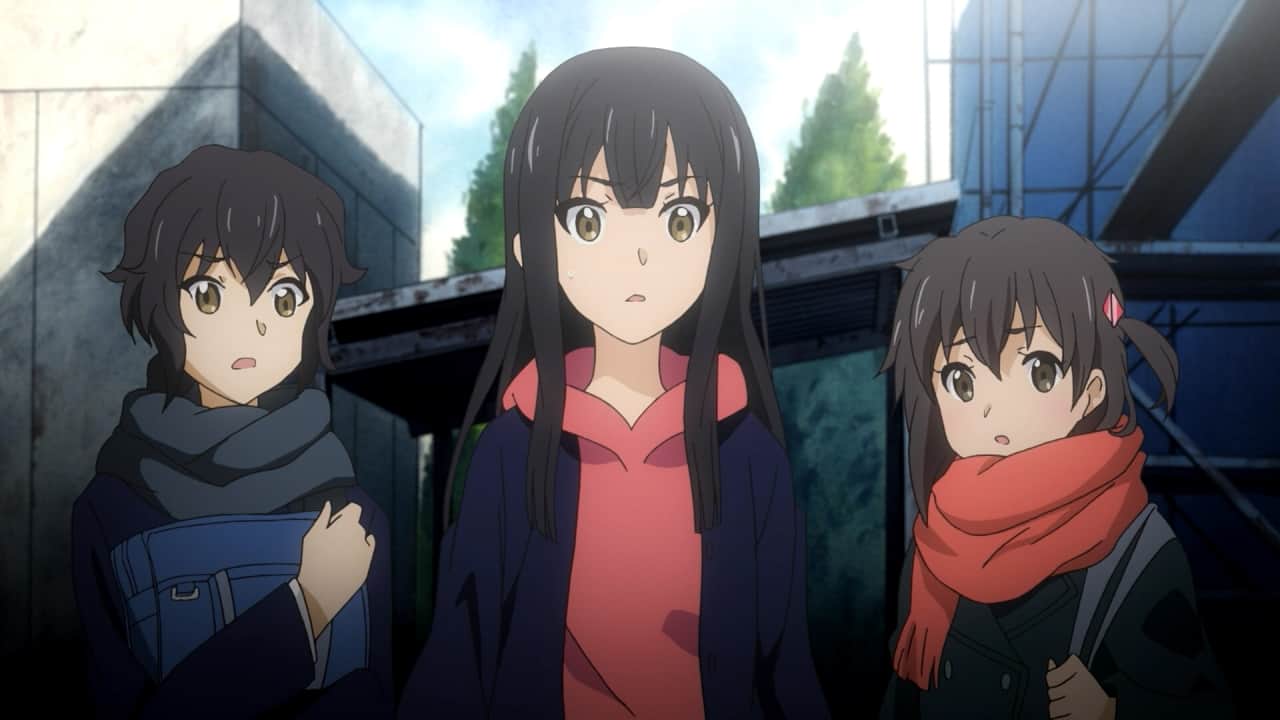
Ruko becomes friends with Selectors Yuzuki Kurebayashi, Hitoe Uemura, and Akira Aoi, each with their own ambitions and difficulties, while she explores WIXOSS.
The series shows the game’s psychological impact. The Selectors must balance their impulses with morality and sacrifice. The LRIGs and the game’s roots are revealed when friendship and rivalry blend.
“Selector Infected: WIXOSS” investigates identity, desire, and the implications of wanting. It explores its characters’ inner difficulties and their choices to find contentment. Card fights, psychological tension, and character development create a thought-provoking, occasionally sad story.
26. The Disastrous Life Of Saiki K
Kusuo Saiki, a psychic high schooler, only wants a normal existence, but his skills often cause amusing chaos. Saiki has telepathy and can read minds, moves objects, and manipulates time and space. He hides his powers to avoid notice.
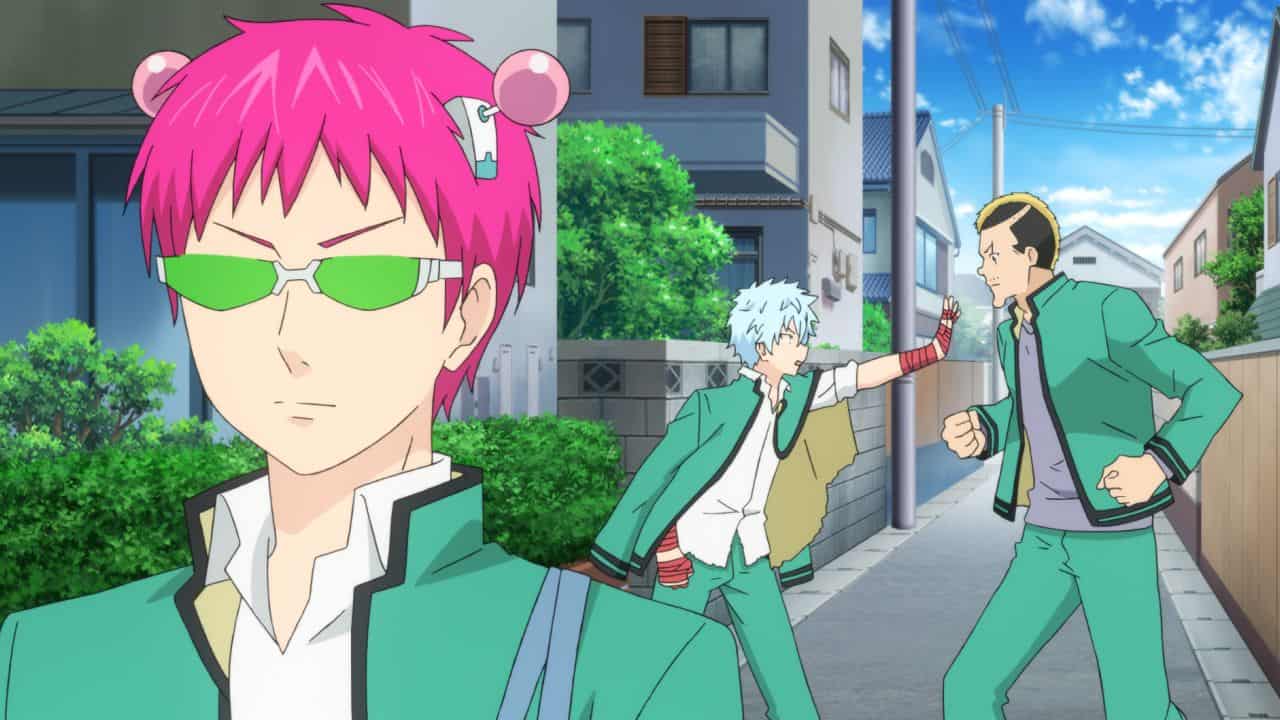
Each episode follows Saiki as he tries to avoid using his powers. However, his classmates and friends regularly get into ridiculous and funny situations, luring Saiki in.
Saiki is caught up in the odd antics of Riki Nendou and Kokomi Teruhashi. Saiki attempts to stay sane while secretly using his powers to prevent disasters.
Despite wanting a normal existence, Saiki makes unexpected acquaintances and connections. Kineshi Hairo, Aren Kuboyasu, and others slowly learn Saiki’s powers. The fast-paced comedy “The Disastrous Life of Saiki K.” uses Saiki’s talents to create funny scenarios.
27. Cells At Work
In “Cells at Work!”, every cell has a specific job to keep the body running. The story follows anthropomorphic cells as they fight to keep the body healthy and safe.
RBC and WBC are the series’ major protagonists. White Blood Cells fight viruses and foreign substances, while Red Blood Cells give oxygen and nutrients to the body.
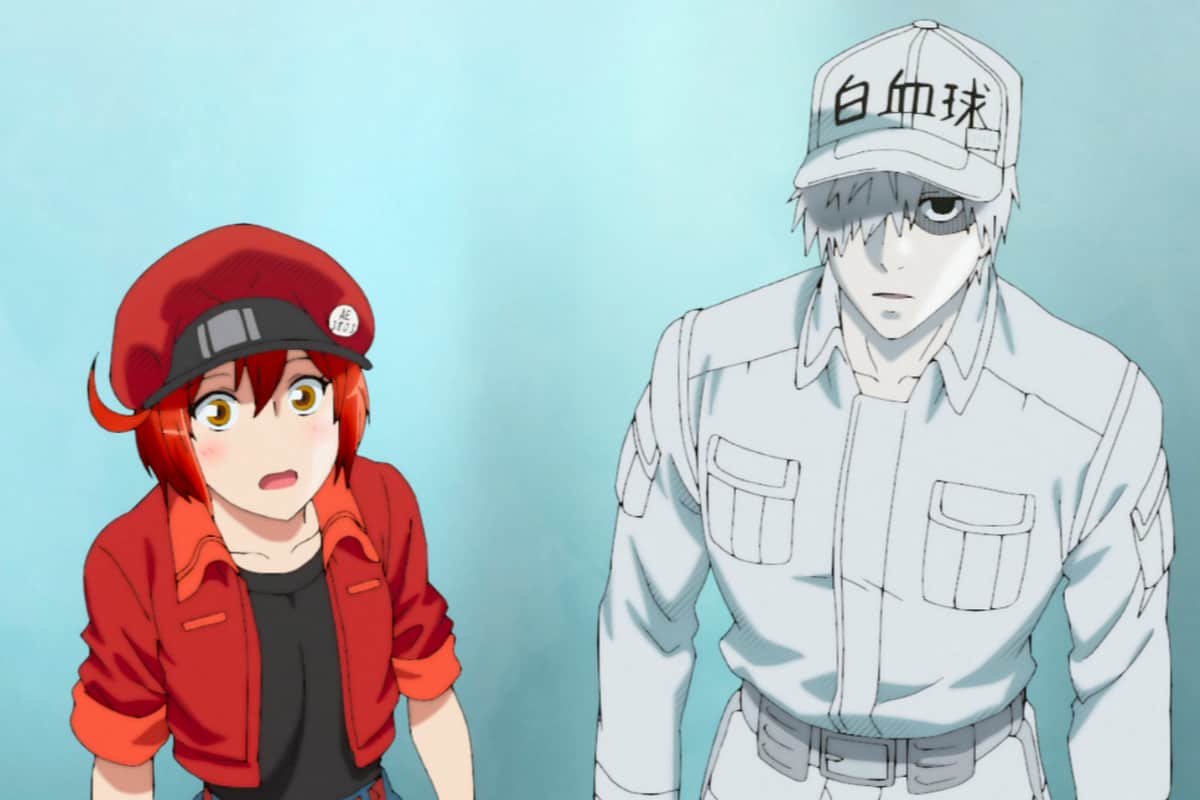
Red Blood Cell navigates the intricate circulatory system and encounters diverse cells and bodily activities throughout the series. She gets lost and in risky conditions, but her White Blood Cells and other cells assist her delivery.
White Blood Cells are always ready to fight dangerous invaders. They fight bacteria, viruses, and other dangers alongside Killer T Cells, Macrophages, and Platelets.
The series shows how cells work together to maintain equilibrium and battle infections and disorders. It teaches basic human biology and cell functioning.
The series is instructive, but it adds humor and adventure to make it fun. Each episode covers health topics from common colds and allergies to more serious illnesses, teaching viewers about the human body in a pleasant and interesting way.
28. Little Witch Academia
“Little Witch Academia” follows Atsuko “Akko” Kagari, a young girl who wants to be a witch. Akko attends Luna Nova Magical Academy, a prominent witch school, and goes on a fantastic adventure with Lotte and Sucy.
Akko battles mystical monsters, witches, and Luna Nova professors throughout the series. She manages classes, examinations, and extracurriculars while seeking to unlock Shiny Chariot’s magic and achieve her goals.
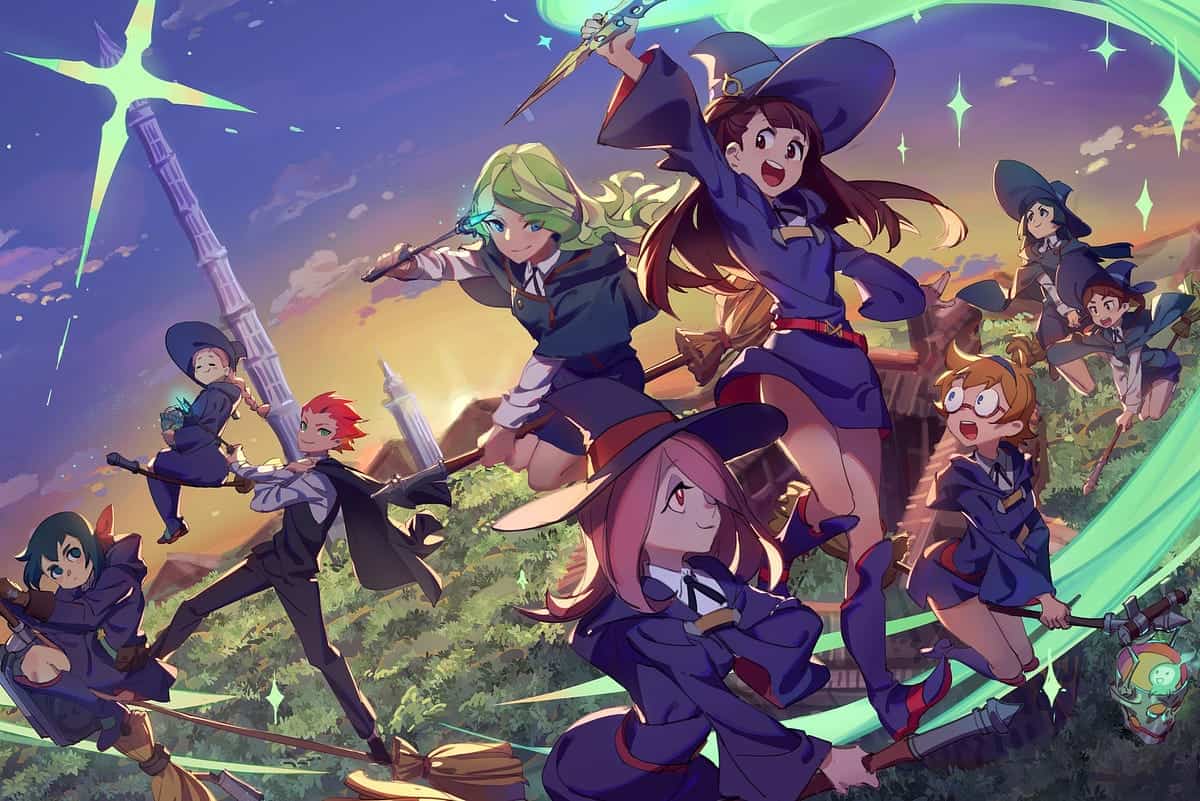
Akko’s zeal and tenacity get her into funny and occasionally dangerous situations. She overcomes hurdles with her steadfast spirit and unique techniques, reminding her students and professors of the value of keeping true to oneself and embracing one’s magical skills.
Akko learns about her power and Luna Nova’s history while she studies. She discovers the Seven Wonders, old magical items, and witches’ struggles in a world that’s forgetting them.
“Little Witch Academia” captivates all ages with its bright animation, charming characters, and magical world-building. It depicts dreams, companionship, and a little girl’s transformation as she pursues her passion and finds her place in the magical realm.
29. Silver Spoon
Yugo Hachiken, a high school student, attends Ooezo Agricultural High School, a rural agricultural school to escape the academic strain at his previous school. He soon discovers that rural living and farming are difficult.
Yugo joins the distinctive Ooezo Agricultural High School community as he adjusts. He has various classmates, including farmers and agriculturalists. Yugo’s inexperience in farming causes amusing and occasionally difficult circumstances.

Yugo learns about cattle, crops, and farm management throughout the series. He endures the hardships, long hours, and unpredictability of farming. Yugo makes friends with his students and professors, who help him navigate farm life and grow personally and professionally.
“Silver Spoon” explores personal growth, self-discovery, and finding one’s place in the world in an agricultural setting. Yugo faces his assumptions and learns the value of hard labor, perseverance, and human-nature relationships.
The series highlights rural issues and sustainable farming. It discusses tradition vs. modernity, technology’s impact on agriculture, and animal husbandry ethics.
30. How To Keep A Mummy
“How to Keep a Mummy,” or “Miira no Kaikata,” is an anime series based on Kakeru Utsugi’s manga. High schooler Sora Kashiwagi receives a mystery package from his adventurer father. Mii-kun, a charming mummy, is inside the gift.
Sora is astonished and confused about how to care for the small mummy. He eventually adopts Mii-kun as a pet. Sora learns how to care for Mii-kun and other magical animals in their family throughout the series.
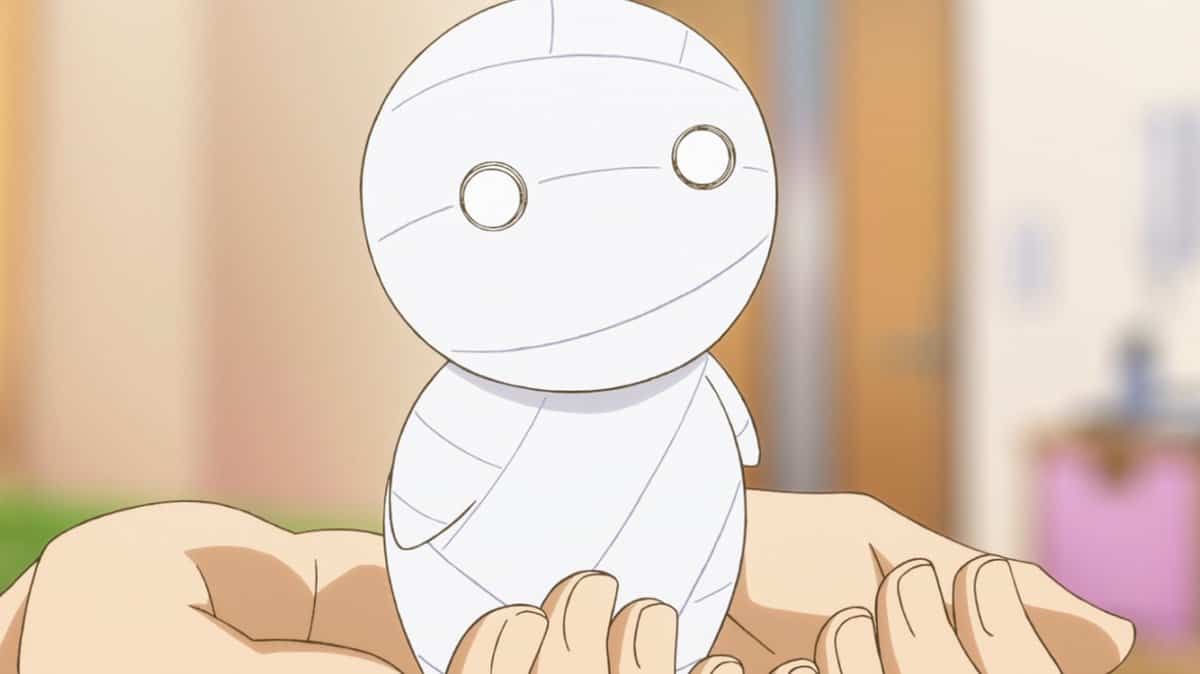
Sora meets more lovely, weird creatures as the narrative progresses. Conny, a little yeti; Isao, a vivacious but naughty dragon; and Mukumuku, a charming but dangerous multi-eyed creature.
The series follows Sora’s sweet relationship with his magical pets. Sora and his buddies, notably Tazuki Kamiya, manage daily life while caring for the creatures. They have adventures and learn about friendship, responsibility, love, and caring.
“How to Keep a Mummy” blends slice-of-life, comedy, and tender moments. It depicts the joys and challenges of pet ownership, even with cute and strange otherworldly beings. The show’s lovable characters, cute creatures, and decent relationships make it fun for all ages.
31. Sword Art Online
In the near future, virtual reality gaming will create immersive virtual worlds. The series follows Kazuto “Kirito” Kirigaya in Sword Art Online (SAO).
SAO players use NerveGear virtual reality headsets to play MMORPGs. On SAO’s opening day, gamers can’t log out, and the game’s designer, Akihiko Kayaba, says they’re trapped in the virtual world. Only by conquering each boss on all 100 floors can you escape.
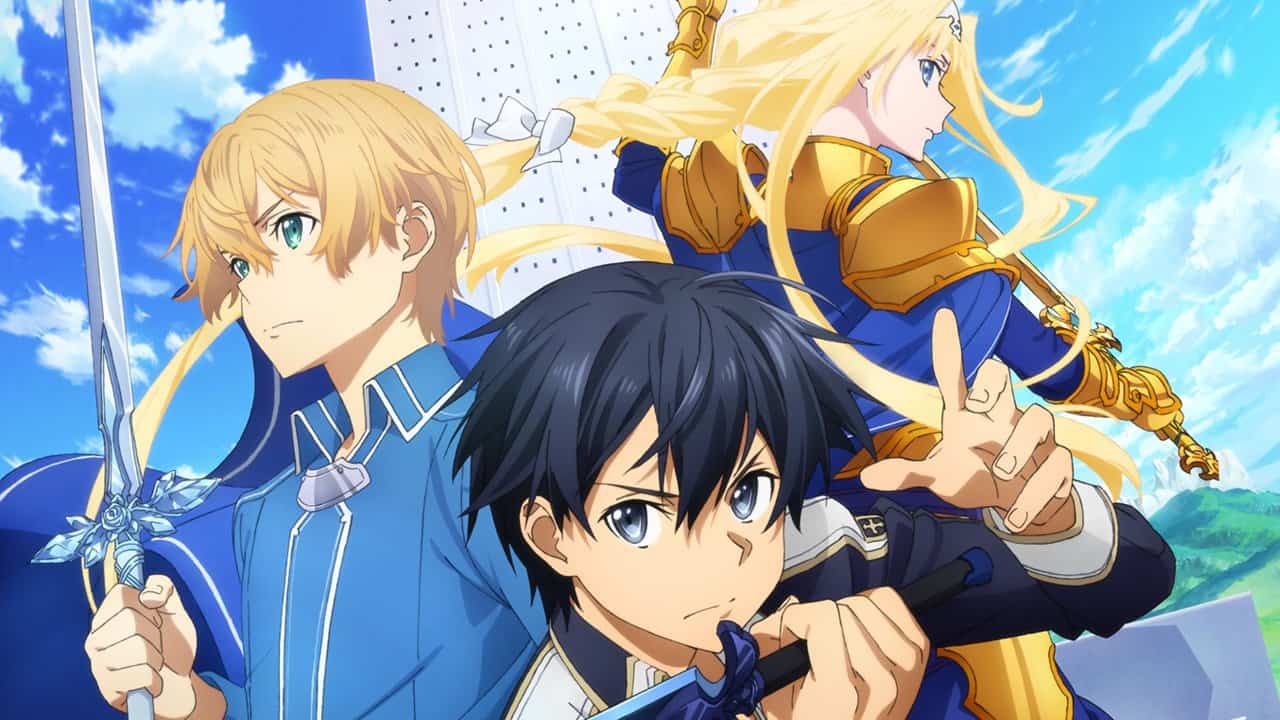
Kirito, an accomplished gamer, clears the game to release himself and the other players. He makes allies, including swordswoman and tactician Asuna. They develop relationships, overcome challenges, and uncover SAO’s creator’s secrets.
The series addresses the effects of virtual reality on society, the blurring of the virtual and real worlds, and the importance of human interactions and emotions in a digital environment as Kirito moves through SAO. It explores the trapped athletes’ psychological and emotional efforts to survive and return home.
After SAO, the series introduces additional virtual worlds and games. These are “ALfheim Online” (ALO), “Gun Gale Online” (GGO), and “Underworld.” Each arc examines game mechanics, difficulties, and character dynamics while exploring the virtual-real-life interaction.
32. Code Geass
“Code Geass” is set in a future where the Holy Britannian Empire rules the world. Lelouch Lamperouge, a high school student, gets Geass from C.C. Lelouch can force anyone to obey him with this power.
Lelouch becomes “Zero” and joins the Black Knights to overthrow the Britannian Empire and improve life for his blind and wheelchair-bound sister Nunnally. Zero leads the Black Knights to overthrow Britannia.

Lelouch’s tactical ingenuity and Geass’s manipulation become crucial to the ongoing war. He plots and fights to overthrow Britannia’s rule. Lelouch navigates a labyrinth of relationships, betrayals, and personal sacrifices with his childhood buddy, Britannian military officer Suzaku Kururugi.
Lelouch discovers a broader plot, including mystical forces, old secrets, and clashing philosophies, as he continues his rebellion. The story tackles power, morality, identity, and choice.
“Code Geass” mixes mecha, politics, and psychological drama. It has complex plot twists, Knightmare combat, and character development. The series challenges power and heroism.
33. Kuroko no Basket
“Kuroko no Basket,” sometimes known as “Kuroko’s Basketball,” is a high school basketball anime series about Teiko Middle School’s Generation of Miracles athletes. Tetsuya Kuroko, the protagonist, is a former player with great basketball talents but little court presence.
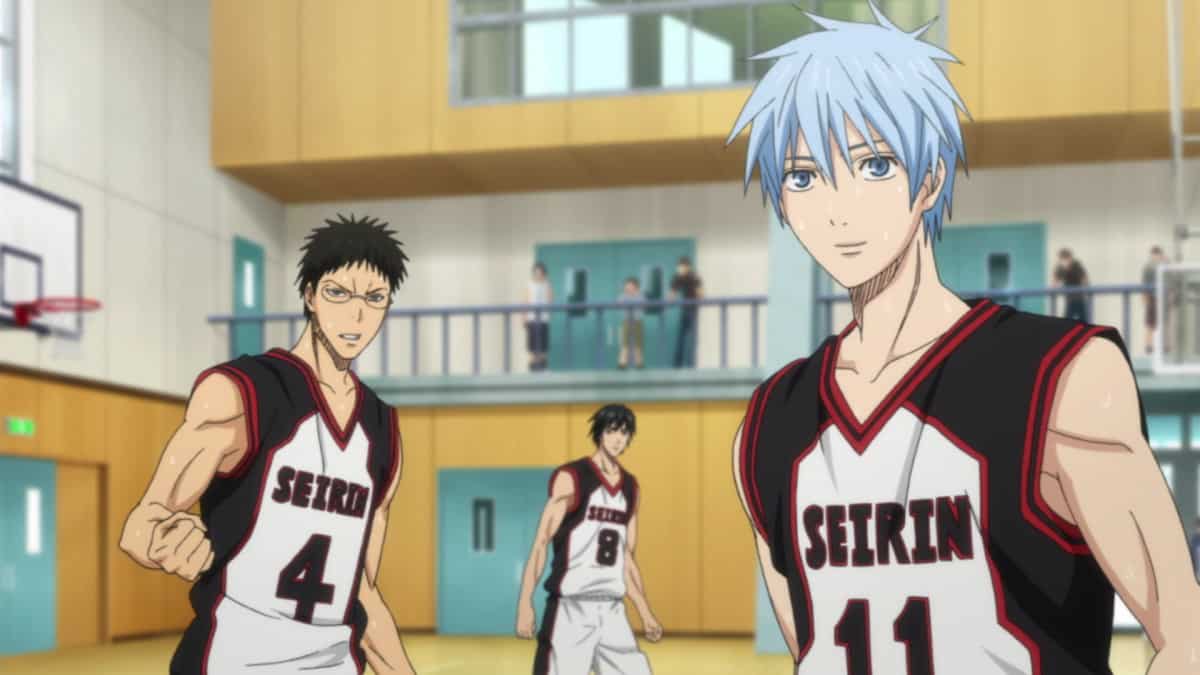
Kuroko joins Taiga Kagami’s Seirin High School basketball team. They want to beat the Generation of Miracles, a group of talented basketball players from several high schools.
Kuroko and Kagami fight the Generation of Miracles and elevate Seirin High School throughout the series. Each Generation of Miracles member has unique skills and playing styles, making them deadly opponents. Kuroko uses misdirection and collaboration to fool his opponents.
The story depicts competitive basketball matchups, showing strategies, skills, and rivalries. As they compete in tournaments to become Japan’s greatest high school basketball team, Seirin High School encounters many tough opponents.
The series explores the characters’ motivations, dreams, and problems as they mature. It stresses teamwork, camaraderie, and mutual trust and support. New basketball talents emerge rivalries are challenged, and friendships are formed.
34. Black Clover
“Black Clover” is a magical anime series. Asta and Yuno are two orphans abandoned at a church on the same day. Asta is the only individual in their universe without magic, unlike Yuno.
Asta wants to be the Wizard King, the kingdom’s strongest mage, despite his lack of magic. Yuno has similar ambitions. Both lads join the Magic Knights, who defend the kingdom.

Asta and Yuno face several obstacles in magic and encounter the mysterious Clover Kingdom and its nobility. They work to show their worth and advance while discovering their origins and the grimoires’ secrets. The series shows different magic types and their strengths.
“Black Clover” has thrilling battles, mystical duels, and heated rivalries. It addresses friendship, determination, and self-improvement. Asta’s story focuses on his tenacity and unbreakable spirit as he overcomes discrimination and the obstacles of a world that values magic.
Asta and Yuno become entangled in a kingdom-threatening battle as the series continues. They fight formidable enemies, uncover conspiracies, and unite with friends to safeguard the Clover Kingdom and fulfill their aspirations.
35. Soul Eater
“Soul Eater” is an anime series about Death City’s Death Weapon Meister Academy (DWMA). The academy trains “Demon Weapons” and Meisters to harvest souls and safeguard the planet from supernatural threats.
Maka Albarn and Soul Eater Evans, Black Star and Tsubaki Nakatsukasa, Death the Kid, and Liz and Patty Thompson are the primary protagonists.
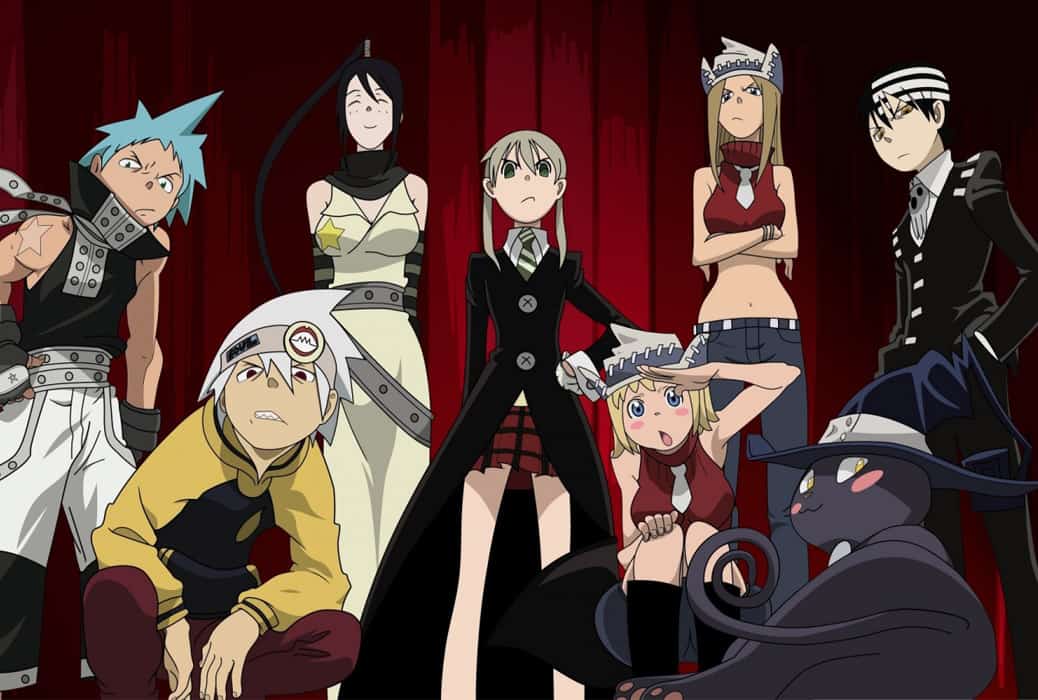
The primary protagonists seek wicked human souls, witches, and other creatures such as Meisters and Demon Weapons. They want 99 bad souls and one witch’s soul to turn their Demon Weapons into Death Scythes suited for Lord Death.
Characters struggle with personal issues and enemies. Maka battles her fears to become a Meister, while Soul Eater seeks power and independence. Tsubaki helps Black Star, who struggles with his ego, become the strongest fighter. Death the Kid, obsessed with symmetry, battles perfectionism and his heritage.
The story follows the rise of the Kishin, an ancient evil whose madness threatens the planet. They face great opponents, unearth dark secrets, and confront the Kishin to prevent disaster.
“Soul Eater” mixes action, comedy, spooky, and fantasy. It explores friendship, teamwork, self-discovery, and good vs. evil. The series’ attractive art design, unique characters, and fierce battles make it aesthetically appealing.
36. Ouran High School Host Club
The anime series “Ouran High School Host Club” takes place at Ouran Academy, a famous high school. Haruhi Fujioka, a clever and independent scholarship student, accidently discovers the school’s host club, a group of six gorgeous male students who seduce and amuse female students.
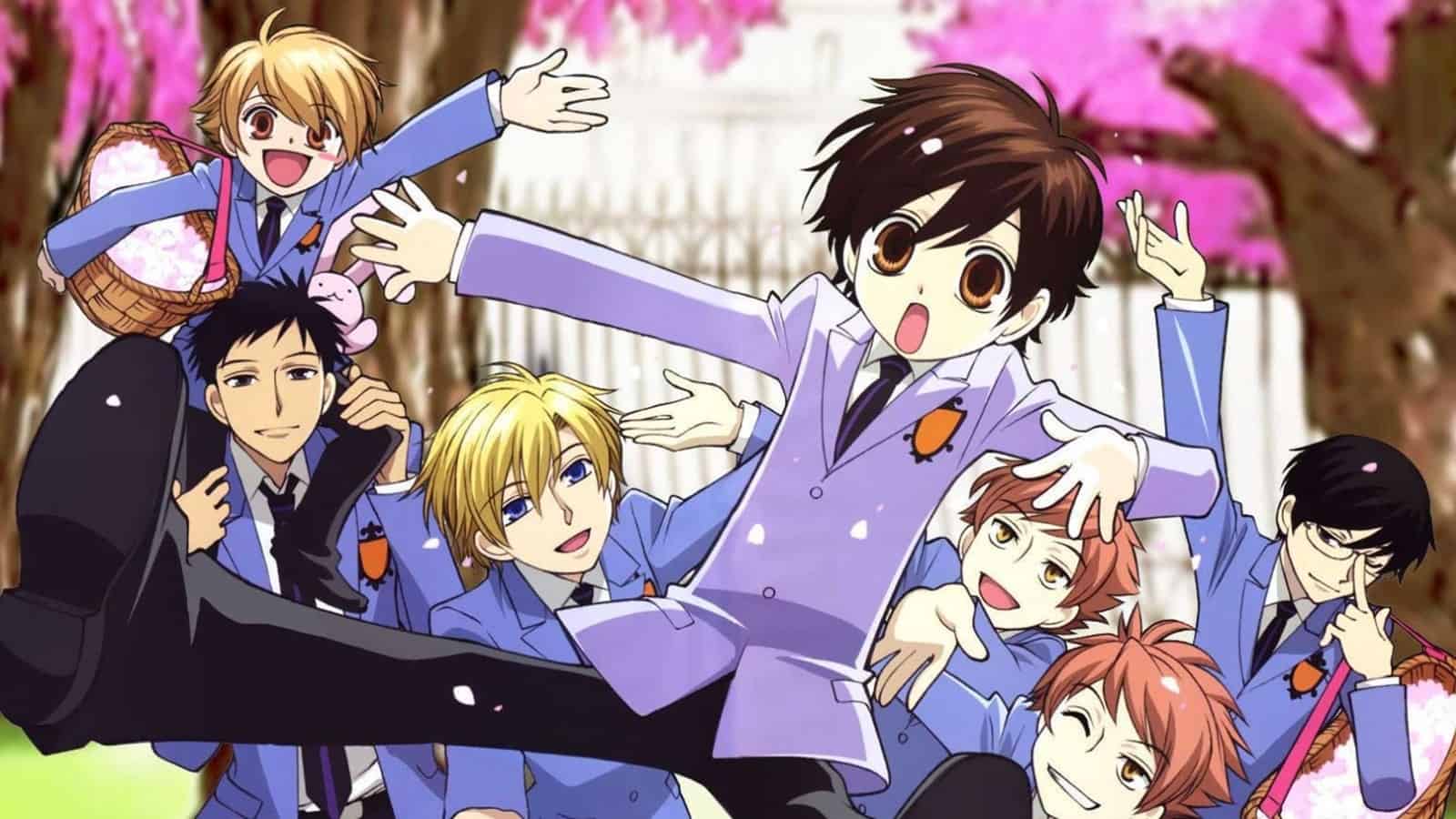
Due to her short hair and basic clothes, Haruhi accidentally damages an expensive vase in the host club’s chamber. She is obliged to host at the host club to repay her debt, despite her reluctance and gender reveal. The host club’s royal Tamaki Suoh, mischievous Hikaru and Kaoru Hitachiin, calm Kyoya Ootori, charming Takashi “Mori” Morinozuka, and lovely Mitsukuni “Honey” Haninozuka welcome Haruhi into their quirky world.
Haruhi faces funny and touching events as a host. She caters to the club’s female customers’ wishes and fantasies. The host club’s dynamics, friendships, and character growth as they bond with Haruhi are explored throughout the series.
Haruhi’s intelligence and humility make her a useful member of the host club. They initially regard her as a “commoner,” but they learn to admire her genuine nature and genuine interactions with people.
“Ouran High School Host Club” blends comedy, romance, and slice-of-life. It parodies romantic comedy and examines identity, friendship, and acceptance. The series explores the protagonists’ romantic relationships and diverse origins, and family expectations.
37. Last Exile
The anime series “Last Exile” follows Anatoray and Disith in a long-running struggle. Two young sky couriers, Claus Valca and Lavie Head, fly a Vanship in the novel.
Claus and Lavie want to be the world’s top sky couriers and become embroiled in a global fight between warring nations, powerful airships, and political intrigue. They meet skillful pilots, noble leaders, and fascinating personalities with their own goals and secrets.
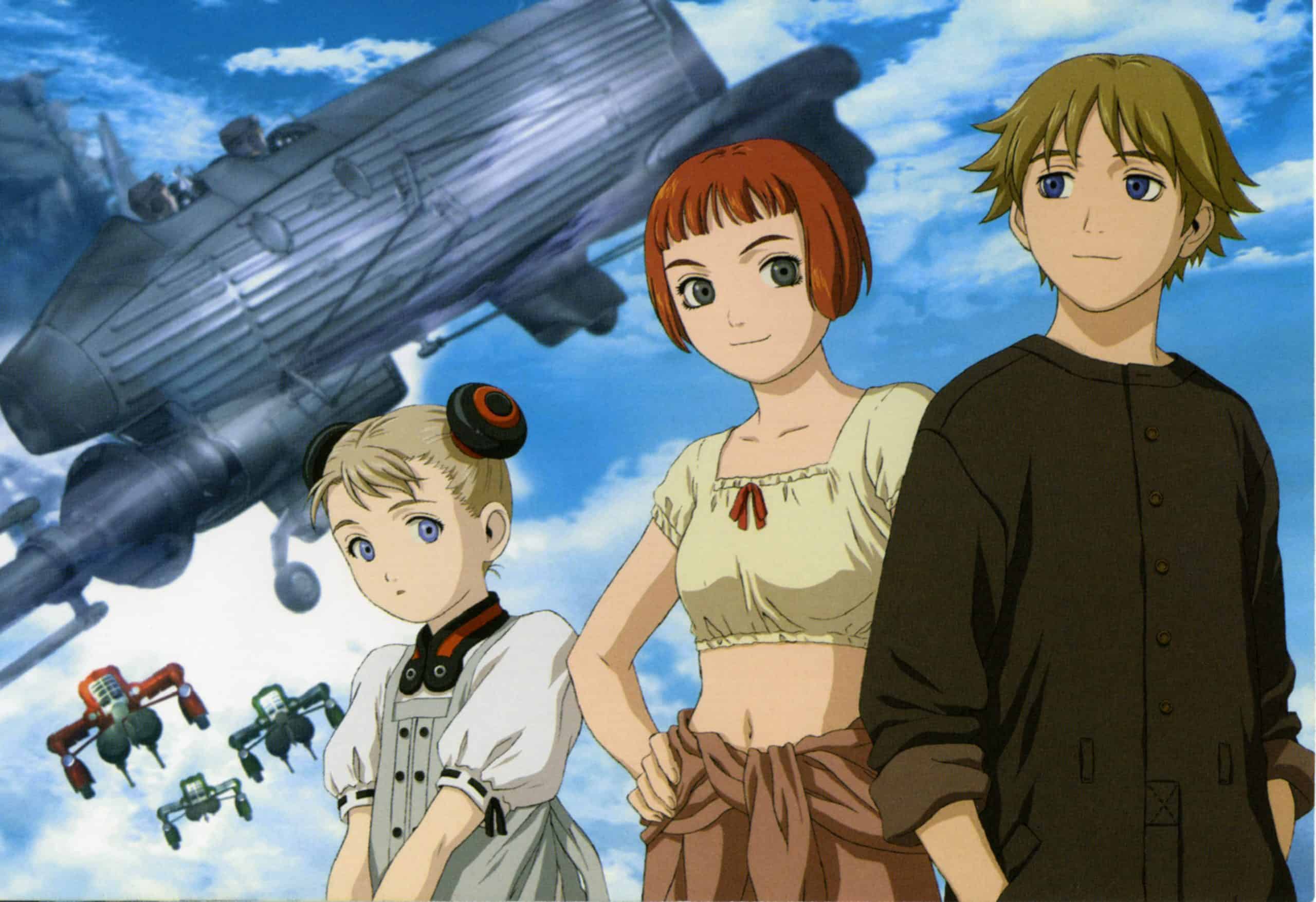
They discover mystical animals, flying fights, and the truth about their world. They join a conspiracy that could revolutionize their world and the war.
“Last Exile” mixes steampunk, fantasy, and adventure. Aerial views, sophisticated world-building, technology, and old-world charm are its highlights. In a war-torn and politically complex world, the series examines battle, friendship, loyalty, and dreaming.
38. Ponyo
After meeting Sosuke, Ponyo, a young fish, wants to become human. Ponyo escapes underwater and is found by Sosuke on the shore, who adapts her. Ponyo utilizes her abilities to become a girl as her desire to become human deepens. This disrupts nature, generating storms and other magical events.
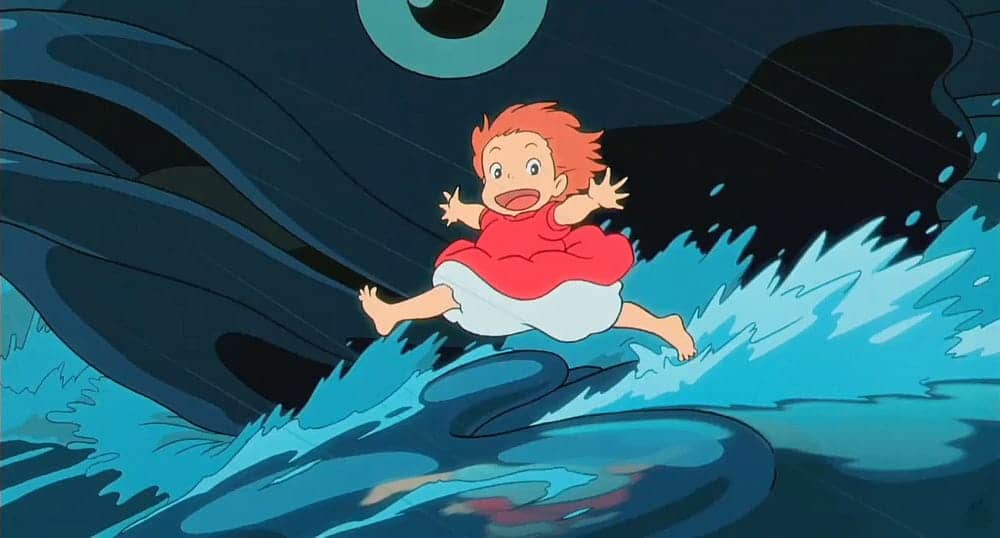
As Ponyo’s change becomes known, her father, Fujimoto, a strong sorcerer and sea guardian, attempts to return her to the depths. Sosuke, determined to save Ponyo and restore equilibrium, goes on a fascinating and touching quest.
“Ponyo” examines love, friendship, and nature’s interconnection. Ponyo and Sosuke bond as they overcome hardships. They meet colorful personalities like Sosuke’s mother, Lisa, and the mysterious Goddess of Mercy.
“Ponyo” evokes childlike wonder and innocence with stunning animation and an innovative storyline. Miyazaki’s approach blends fantasy, folklore, and environmental concerns. The film emphasizes nature’s beauty and the fragile balance between humanity and nature.
“Ponyo” is a wonderful tale for all ages with engaging characters, sincere feelings, and stunning images. It is a monument to love, human resilience, and the relationships we establish with loved ones.
39. Fruits Basket
After a sequence of circumstances, Tohru Honda moves in with the enigmatic Sohma family. The Sohma family finds her and invites her to remain. Tohru discovers the Sohma family’s curse. Chinese zodiac animals possess twelve family members. They become their zodiac animal when hugged by the opposing gender.

Tohru learns about the Sohma family’s troubles and emotional burdens owing to the curse. She bonds with family members like Yuki, the rat, Kyo, the cat, Shigure, the dog, and others.
The cursed members are supported and healed by her. They negotiate the curse and family dynamics.
“Fruits Basket” emphasizes love, friendship, healing, and self-acceptance. It explores abuse, loss, and family dynamics in the protagonists’ lives. Compassion and understanding transform the human soul in the novel.
40. Hikaru No Go
Hikaru Shindo, a little child, finds a peculiar Go board in his grandfather’s attic. He has no idea this experience will transform his life.
Hikaru is possessed by Heian-era Go prodigy Fujiwara no Sai when he touches the board. Sai, a Go master who died once ago, longed to play the “Hand of God.” Hikaru allows Sai to pursue the perfect game.
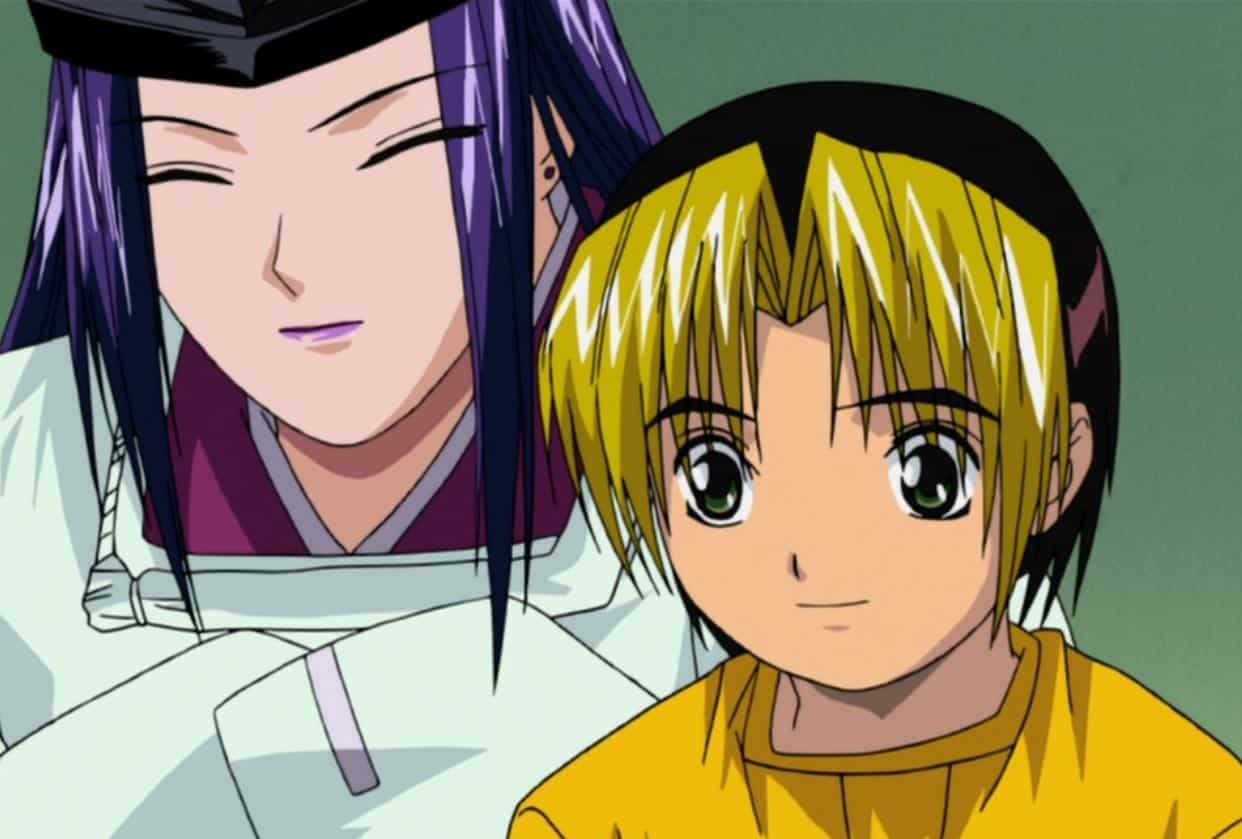
Hikaru first finds Go uninteresting and old-fashioned. Hikaru realizes his aptitude and passion for the game as he plays against others under Sai’s instruction. He competes in Go tournaments against skilled opponents and becomes a Go celebrity.
Hikaru befriends other Go players, including his adversary Akira Toya, a kid prodigy and son of a notable Go player. Hikaru’s passion for Go motivates him to progress, overcome hurdles, and reach the top ranks. The game teaches Hikaru life lessons and helps him grow personally and professionally.
“Hikaru No Go”‘s a fascinating tale with well-developed characters and the ability to capture professional gaming’s intensity and thrill to enthrall viewers. It illuminates the ancient game of Go and its deep connections through time and generations.
41. Tamako Market
“Tamako Market” follows high school student Tamako Kitashirakawa in the Usagiyama Shopping District. Tamako is highly involved in her family’s mochi (Japanese rice cake) shop’s daily operations. Dera Mochimazzi, a talking bird from a distant island, changes her life.
Tamako learns Dera’s goal and gets into different misadventures and comedies as they become friends. Tamako lives her life with her best pals, Midori and Kanna, and other colorful people from the retail district.

The series “Tamako Market” addresses friendship, family, and community. It depicts Tamako’s personal friendships, family, and retail district neighbors. The show shows how the community supports one another and preserves its dynamic marketplace.
The series is funny but also explores deeper emotions and personal growth. Tamako inspires others and learns valuable life lessons with her kindness and cheerfulness. The show celebrates love, connection, and regular life.
42. Chi’s Sweet Home
The story follows Chi, a curious and charming kitty who loses her mother in the city. A generous family adopts her. Chi adjusts to her new surroundings and learns about the world in the series.
Chi’s life is full of mischief and beautiful moments. Yohei, the young kid who adores her, and Mom and Dad love and care for her.
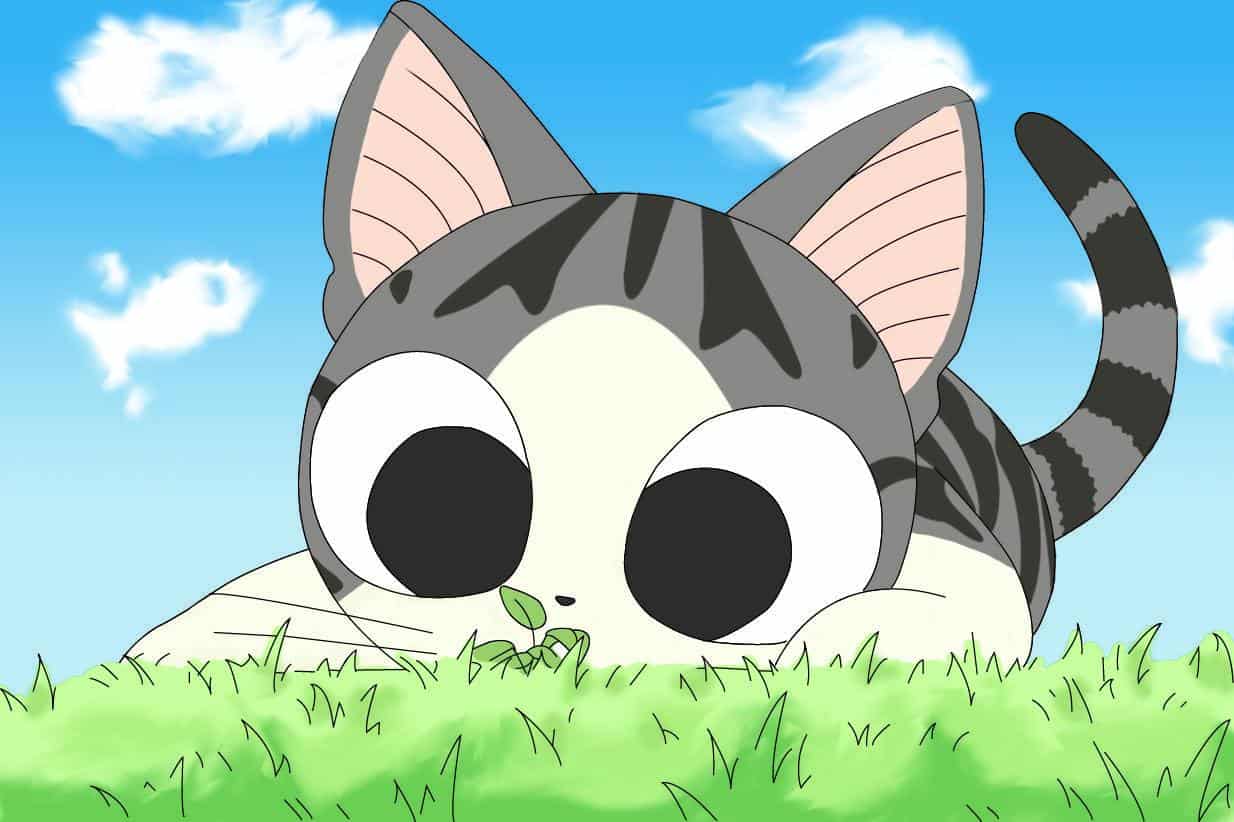
Chi meets new animals, makes friends, and goes on minor adventures in her new environment. Chi’s curiosity gets her into funny situations and teaches her about loving families.
“Chi’s Sweet Home” is noted for its cute art, charming characters, and ability to convey a kitten’s innocence and charm. It’s a fun, family-friendly show that celebrates the special link between humans and their pets.


